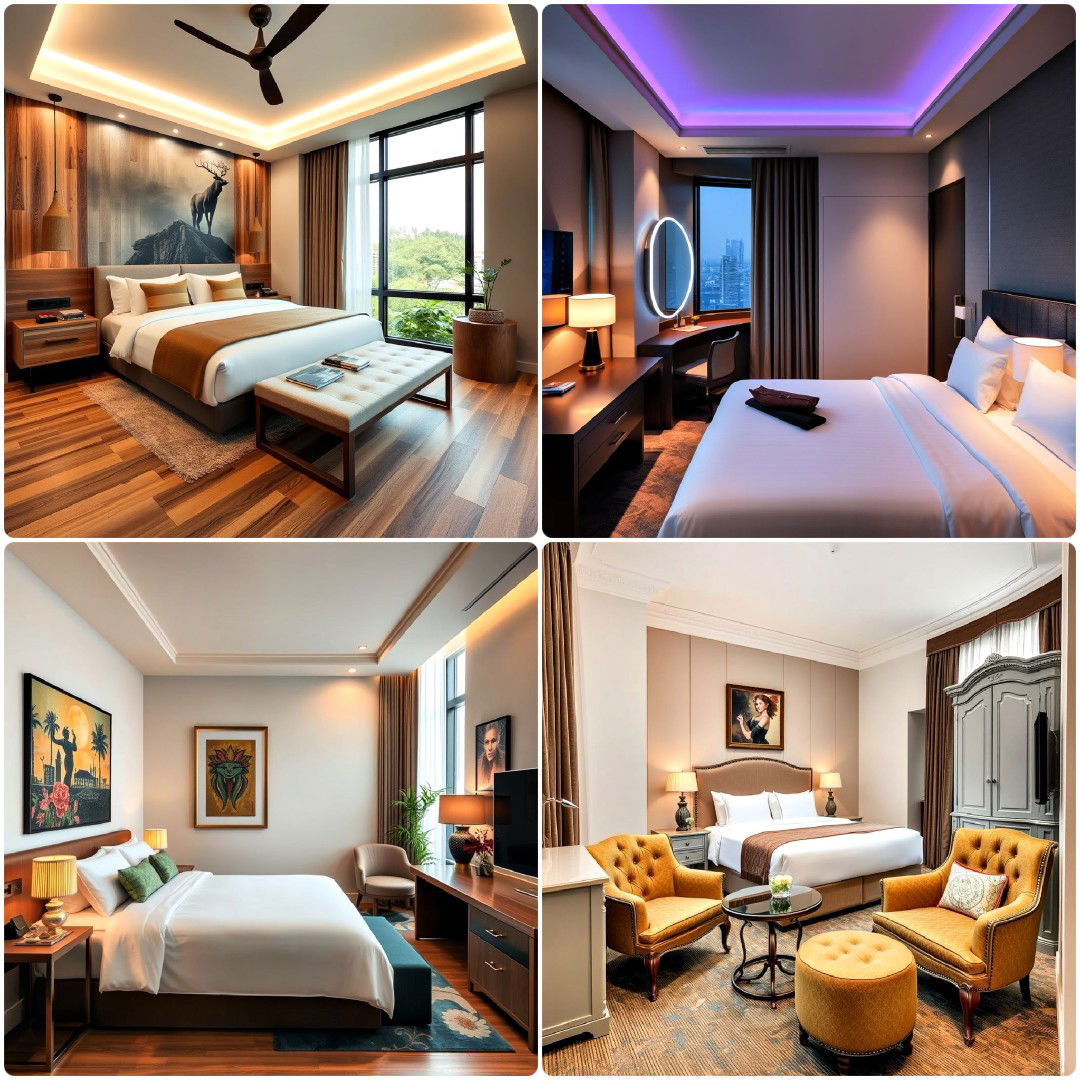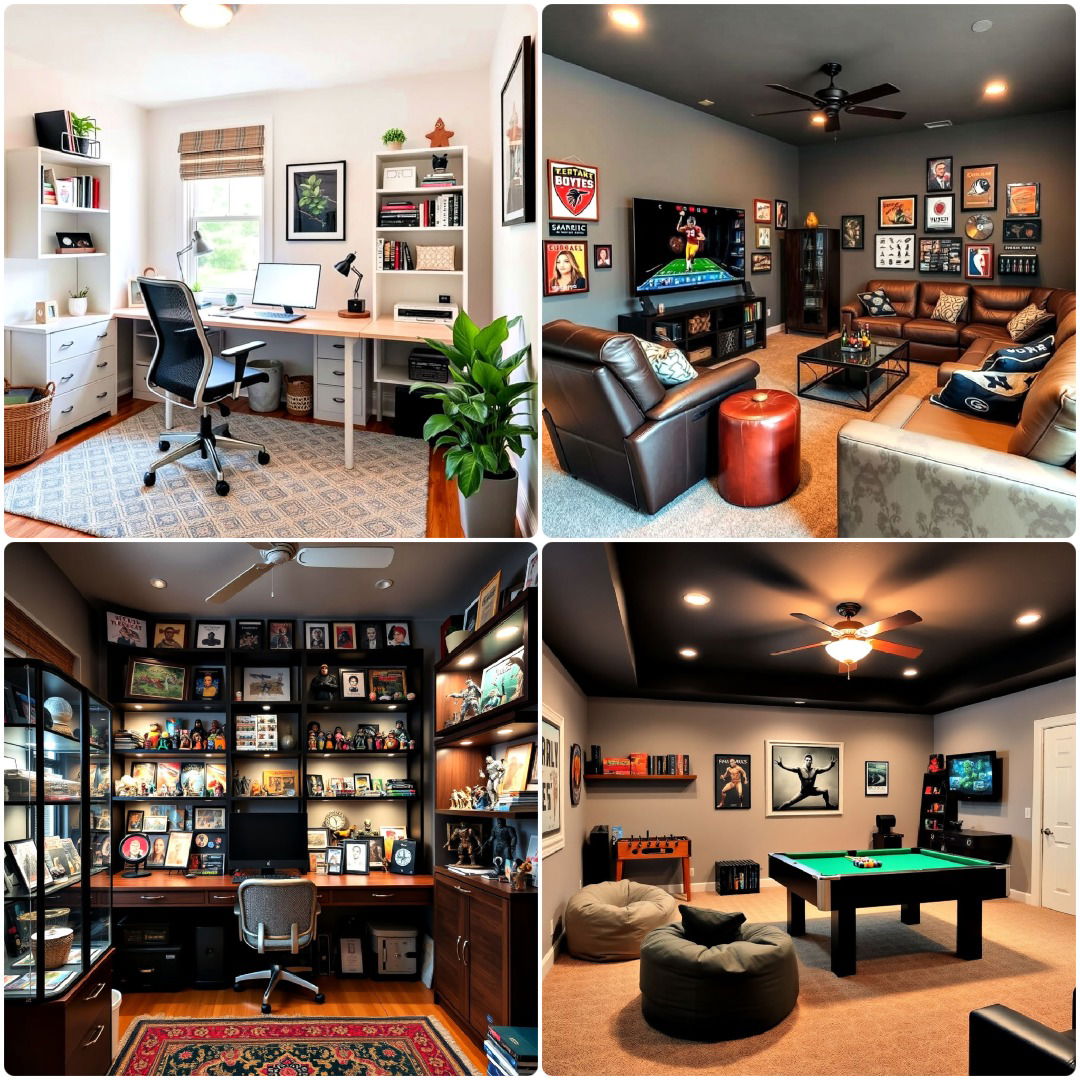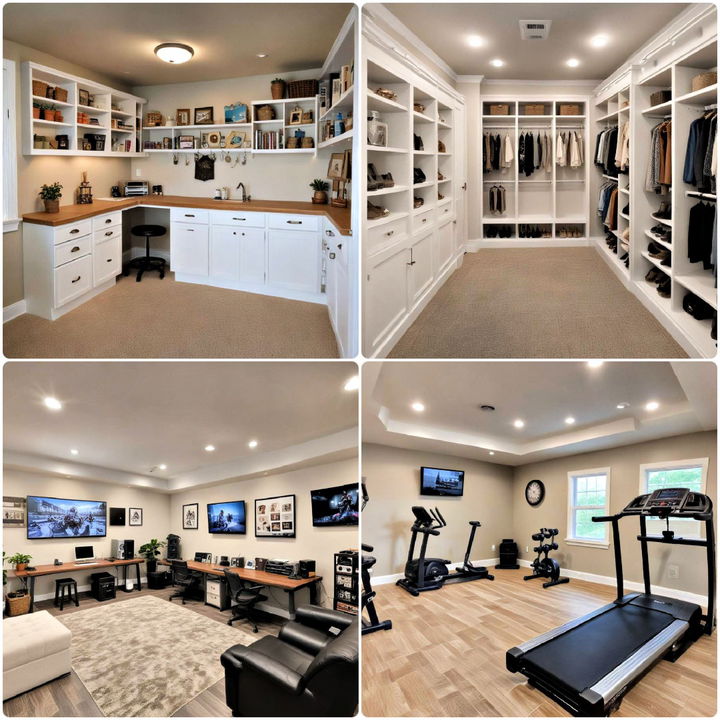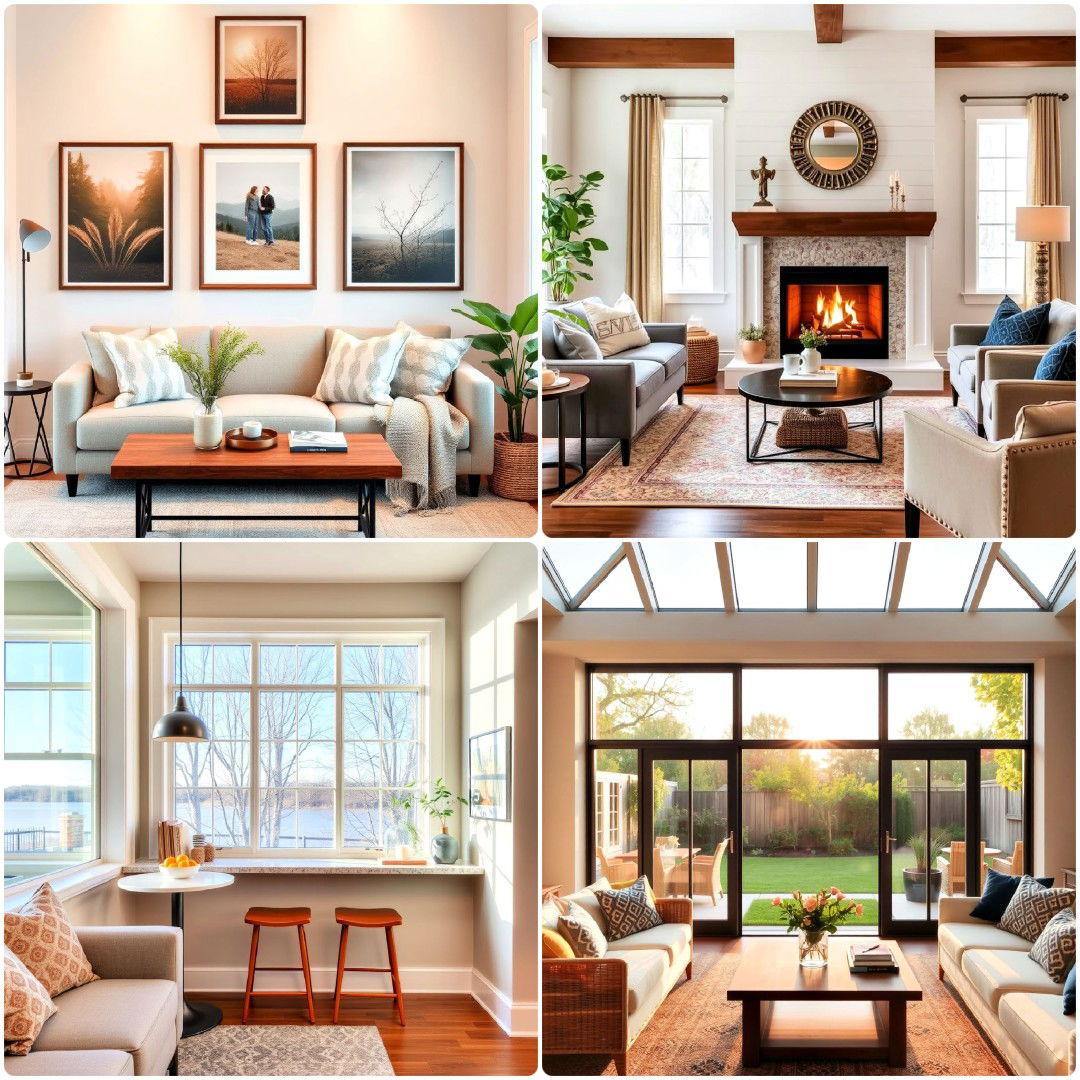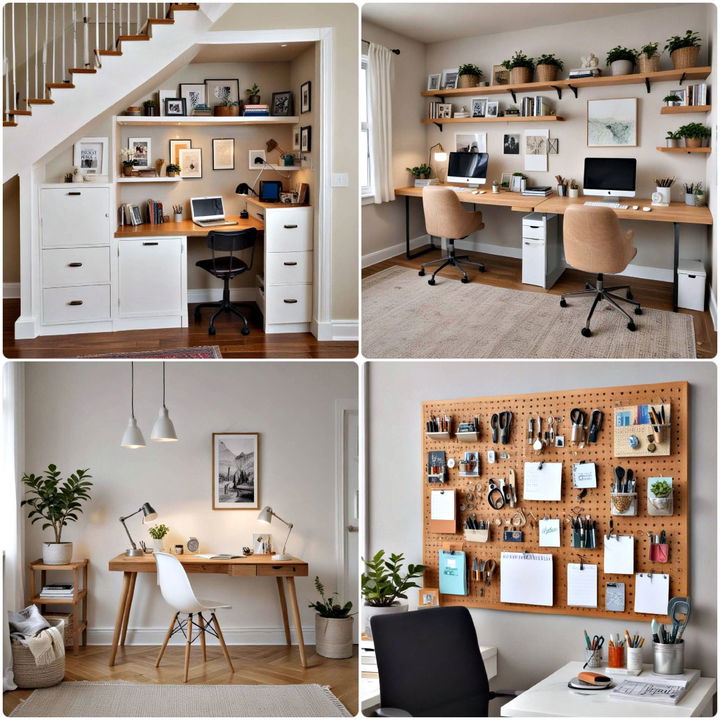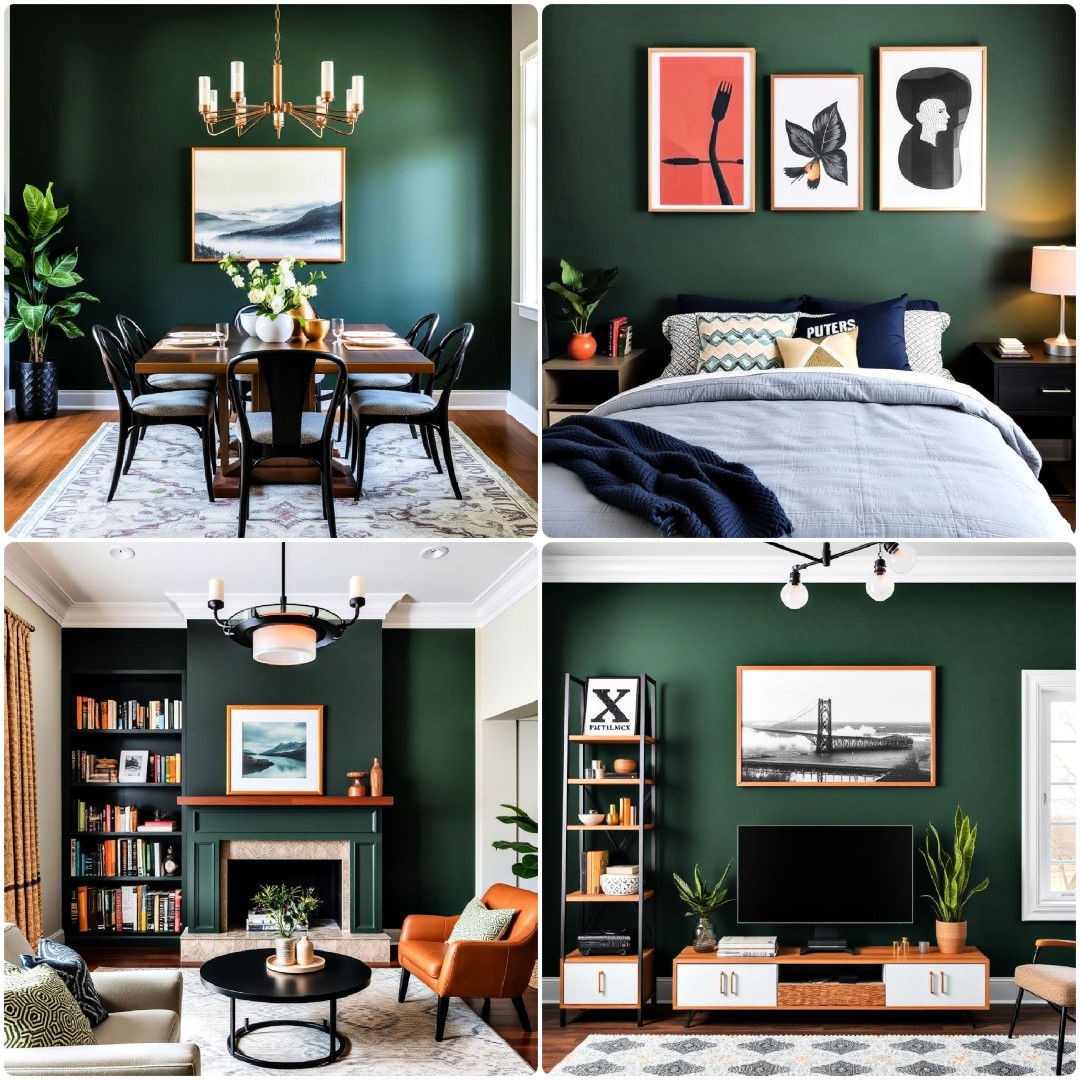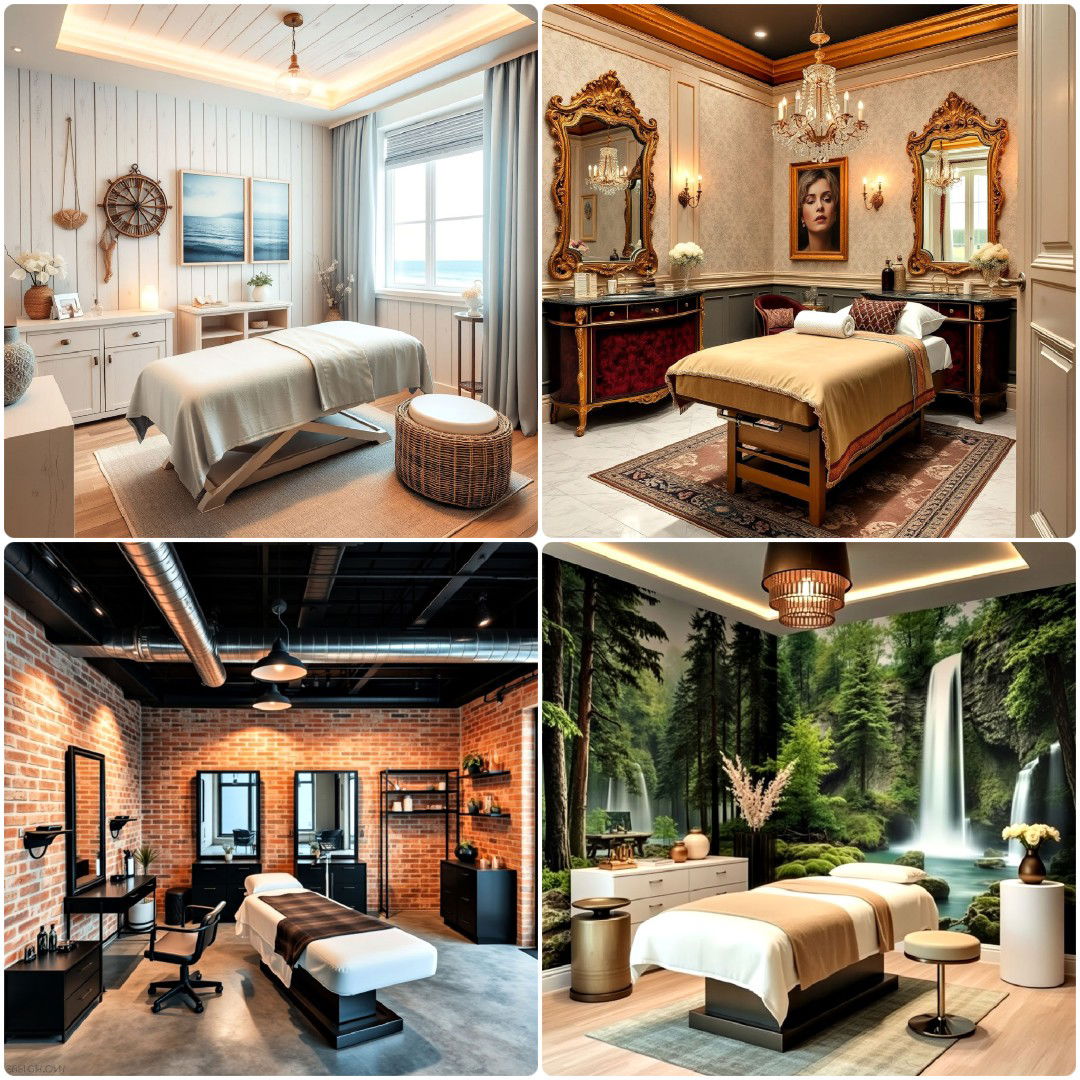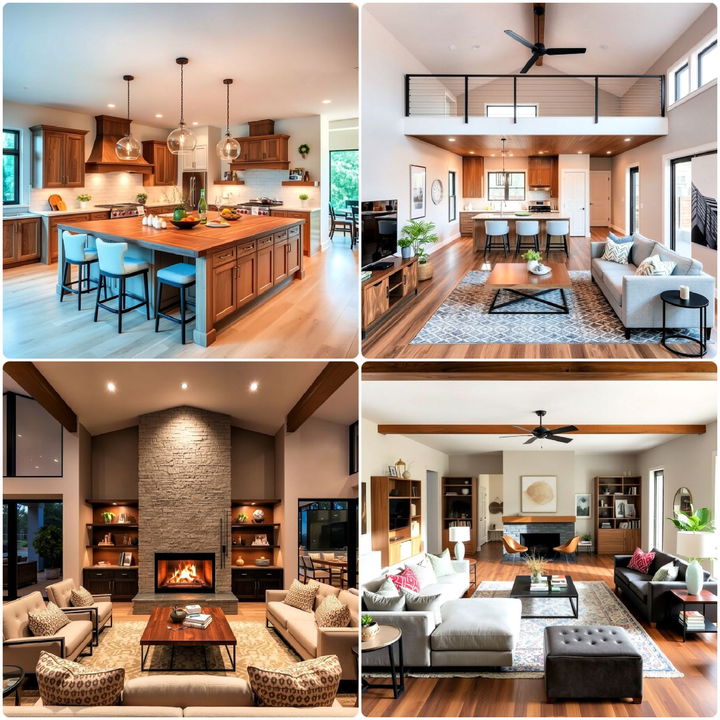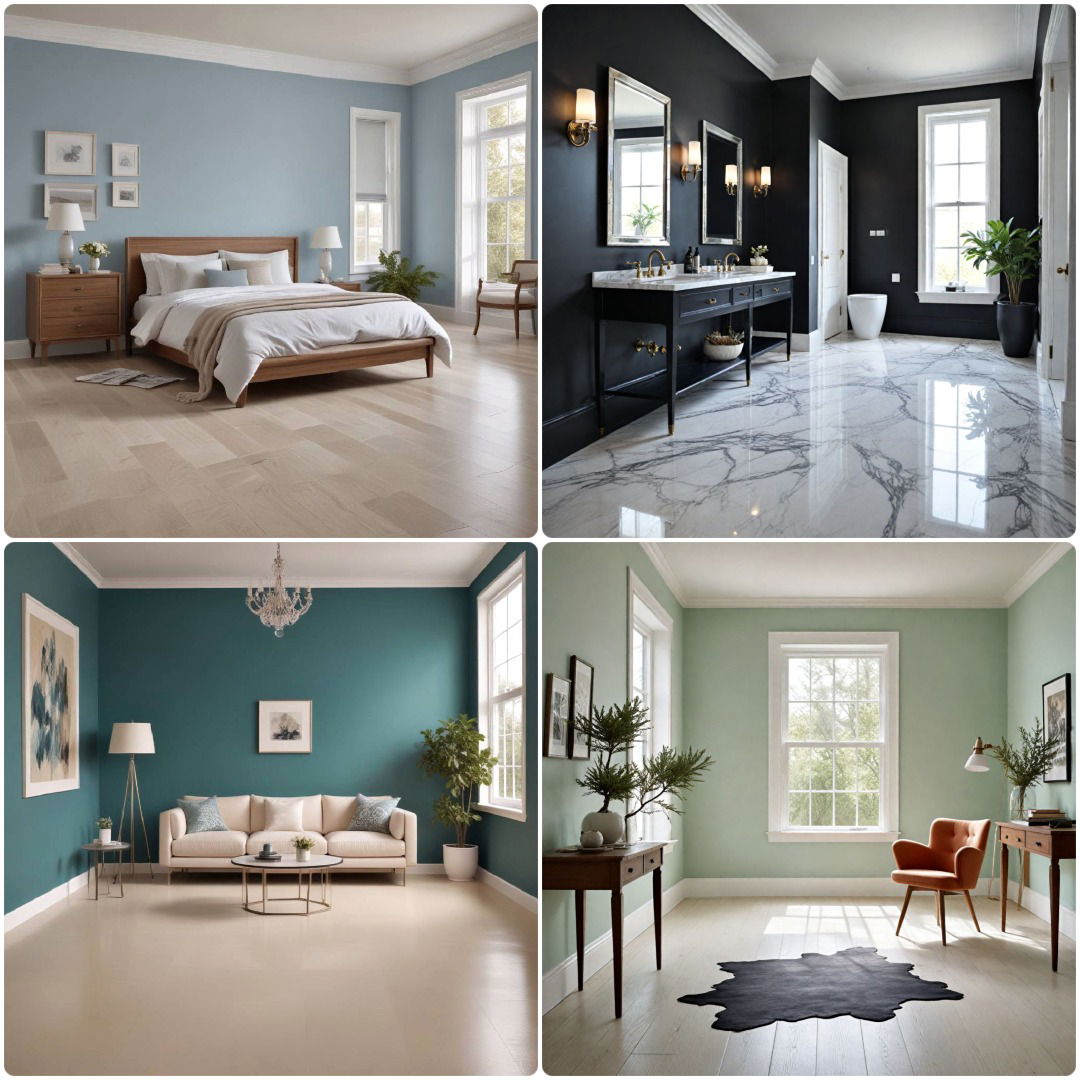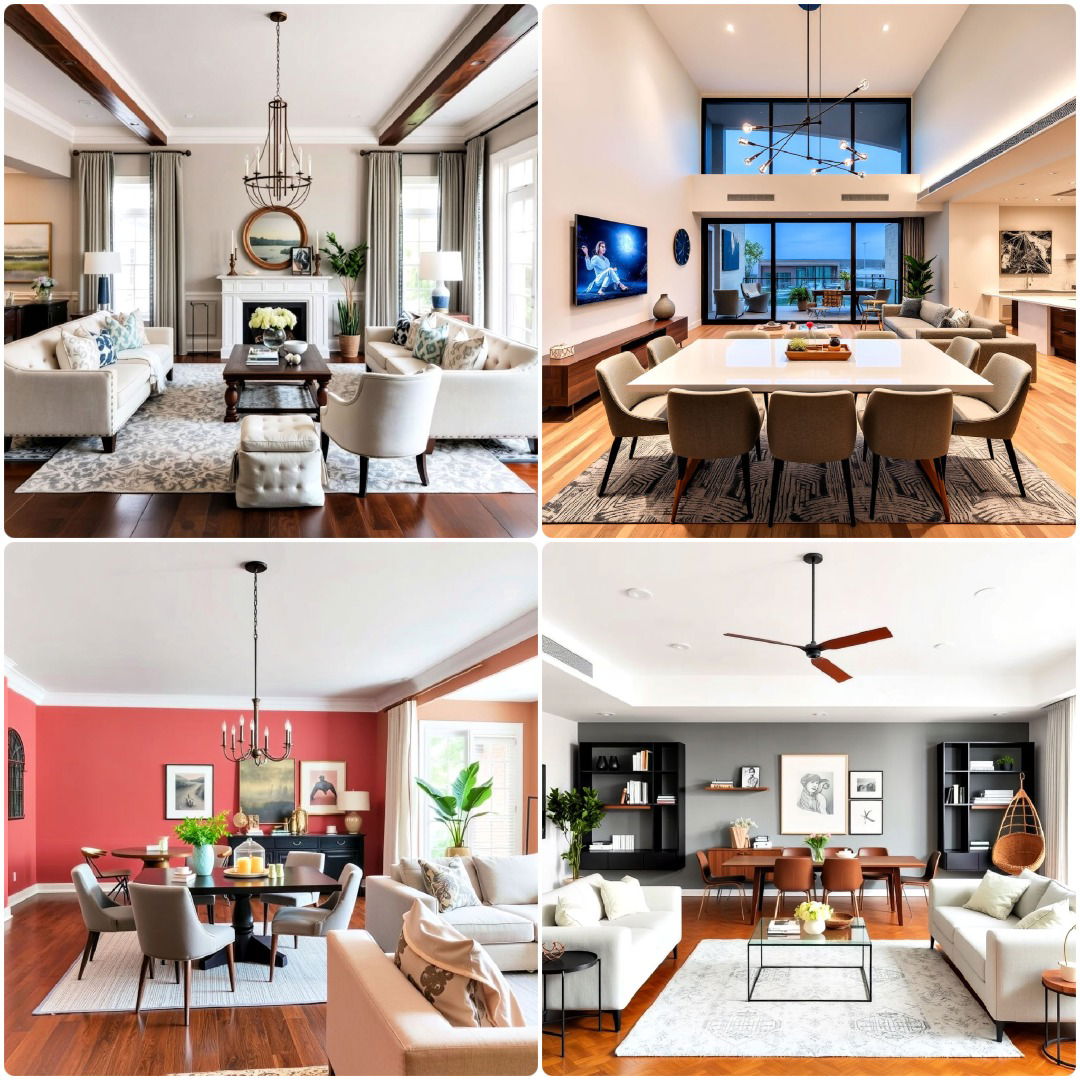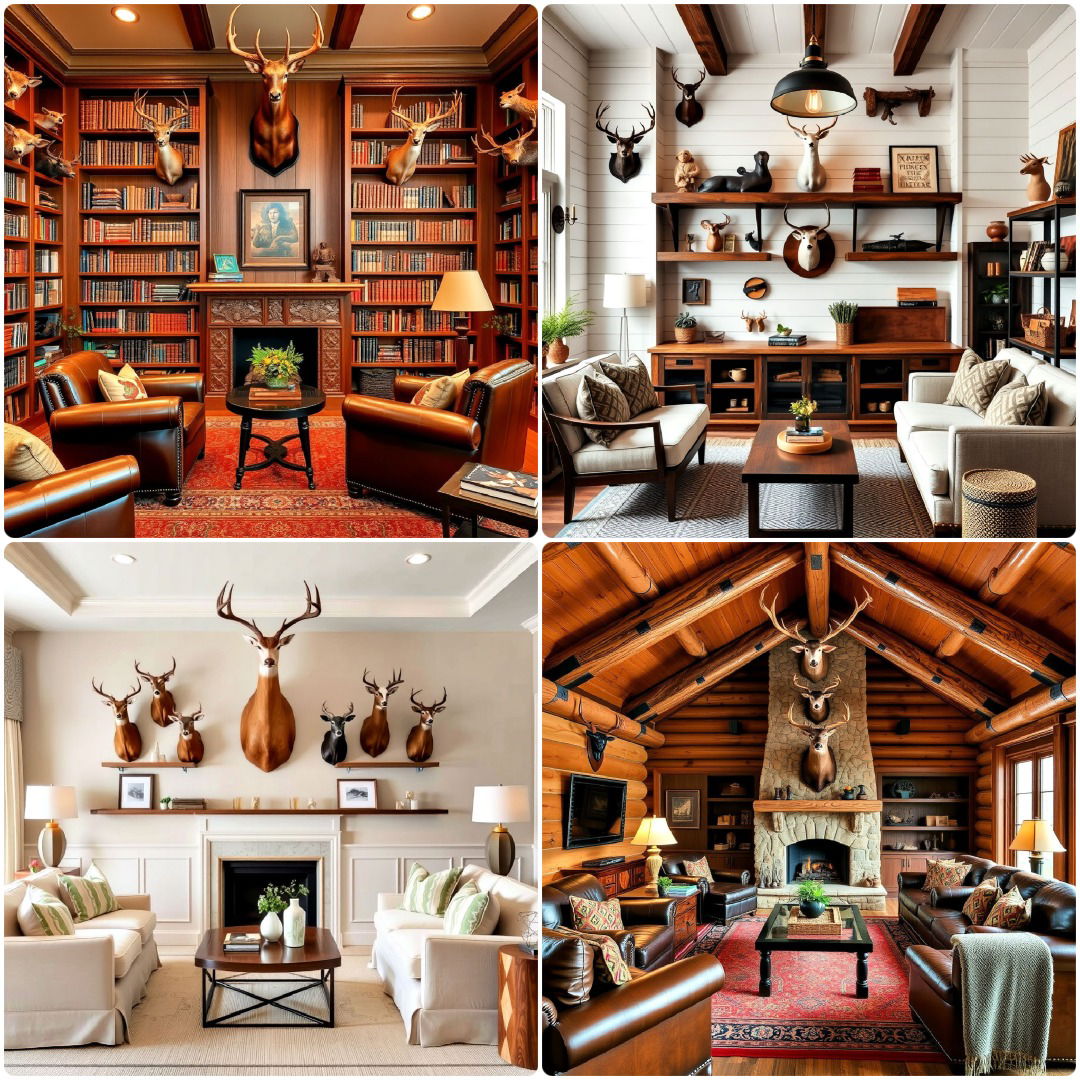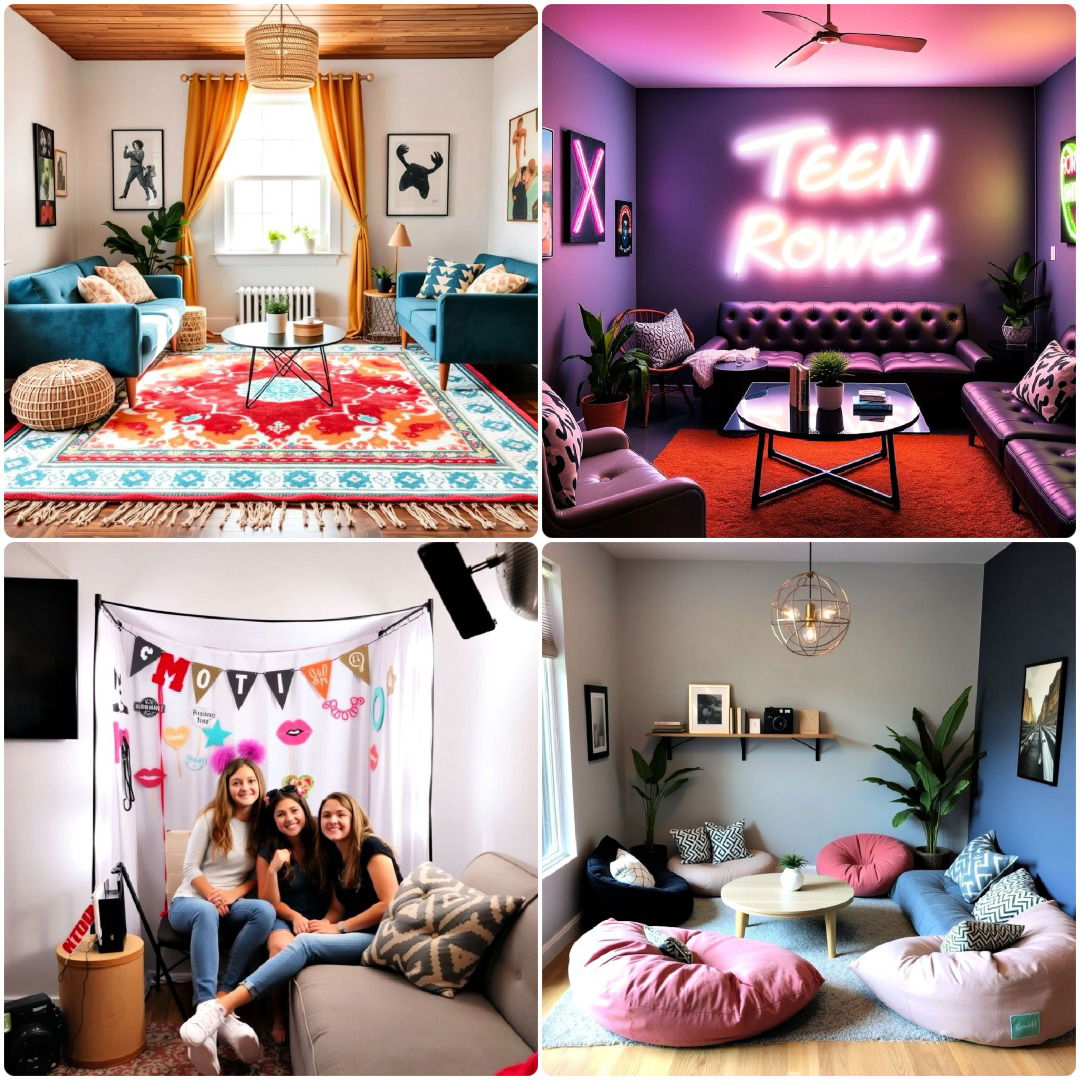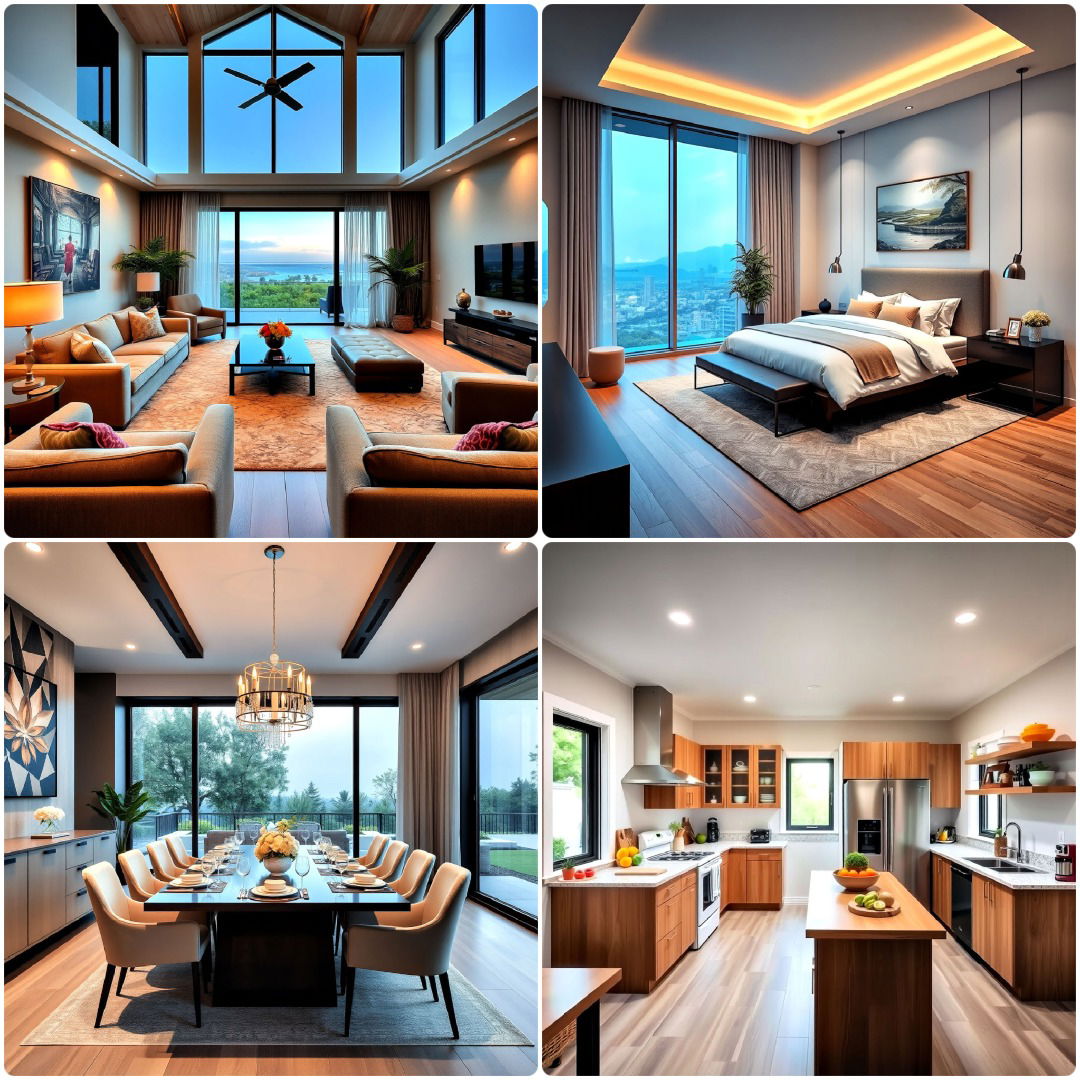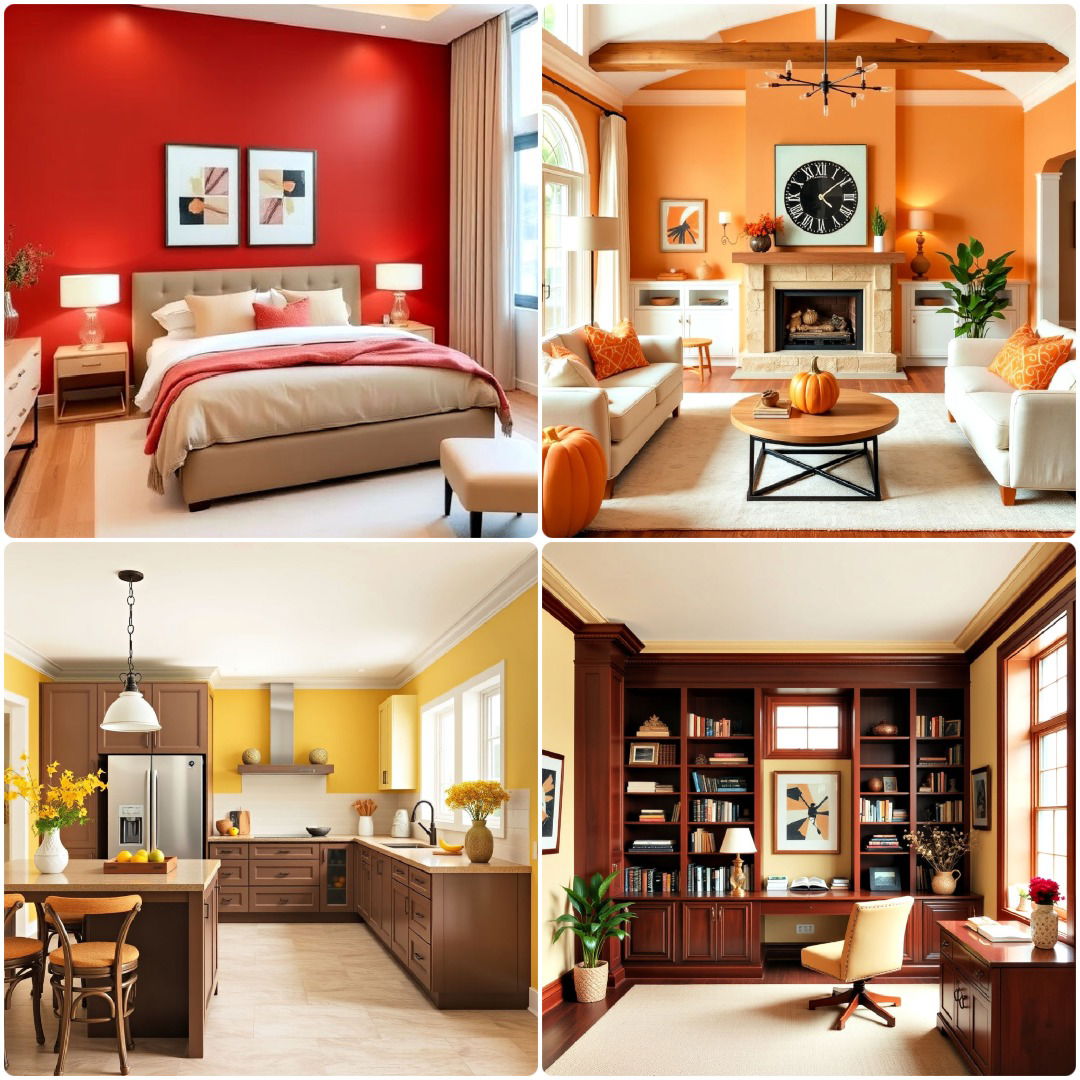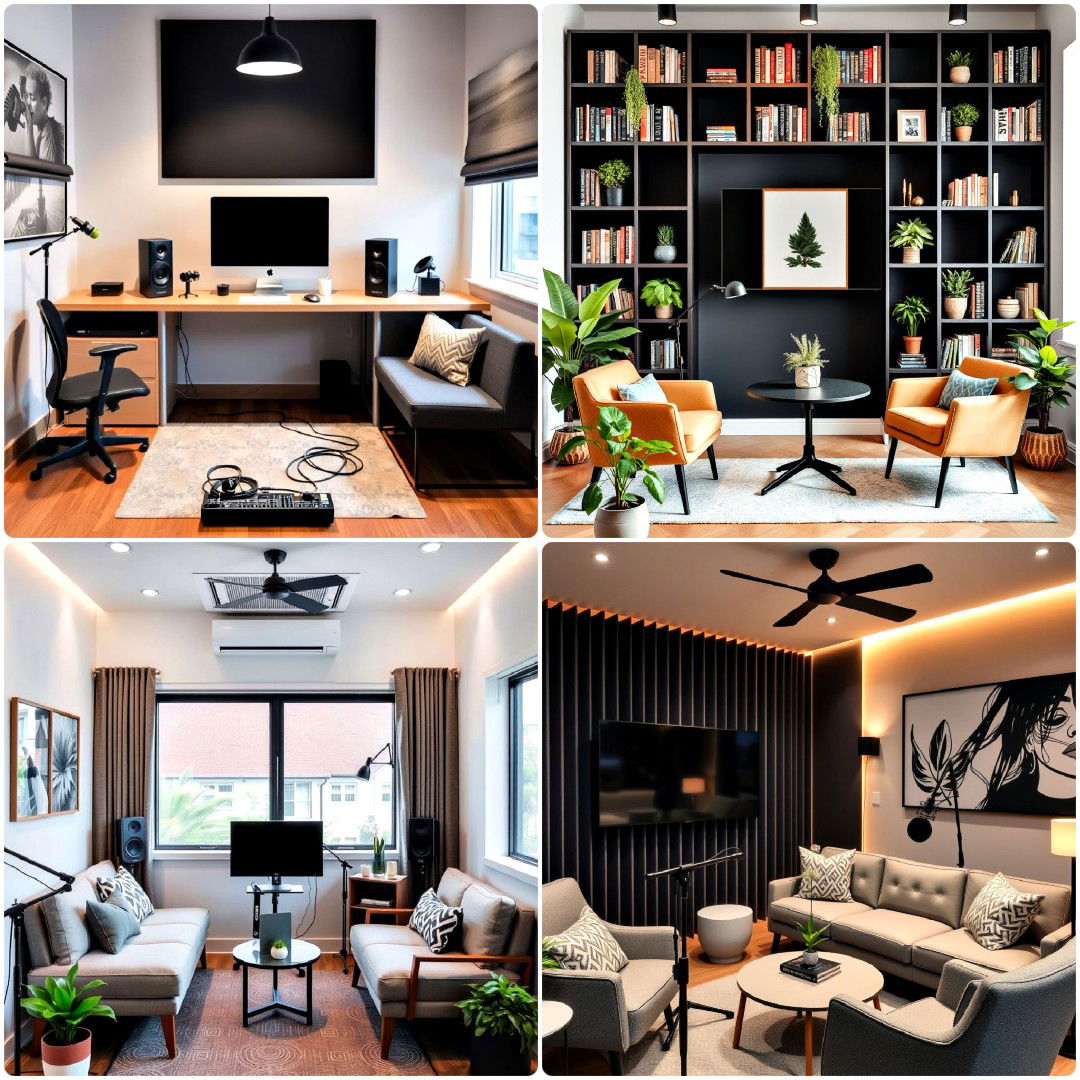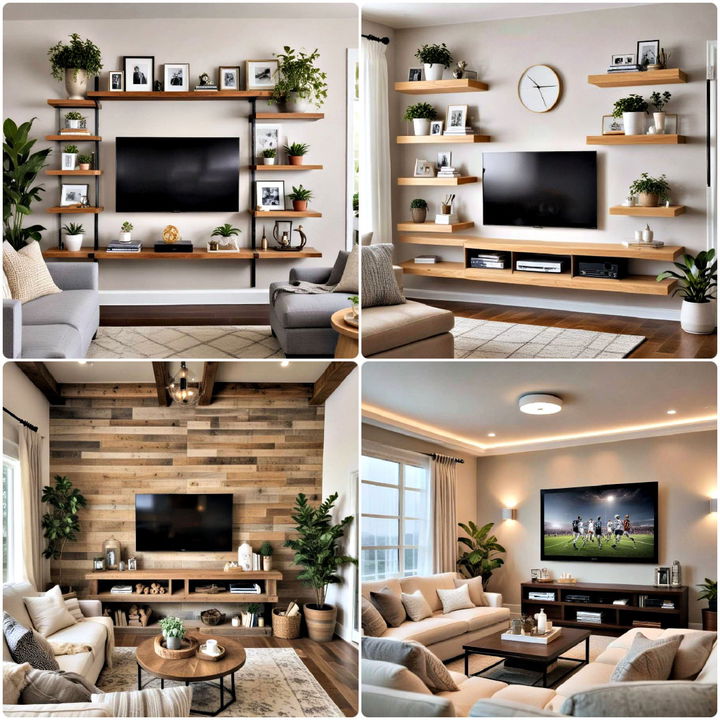Boost productivity and leave a lasting impression with these 20 innovative conference room design ideas! A conference room isn’t just a meeting space—it’s a stage for collaboration, creativity, and crucial decision-making. The right design can inspire innovation, foster focus, and reflect your organization’s professionalism. Whether you're hosting high-stakes negotiations or team brainstorming sessions, your conference room's aesthetic and functionality set the tone for productivity. Let's explore how to craft a space that seamlessly blends style and practicality, leaving a lasting impression on everyone who walks through the door.

1. Incorporate Natural Light
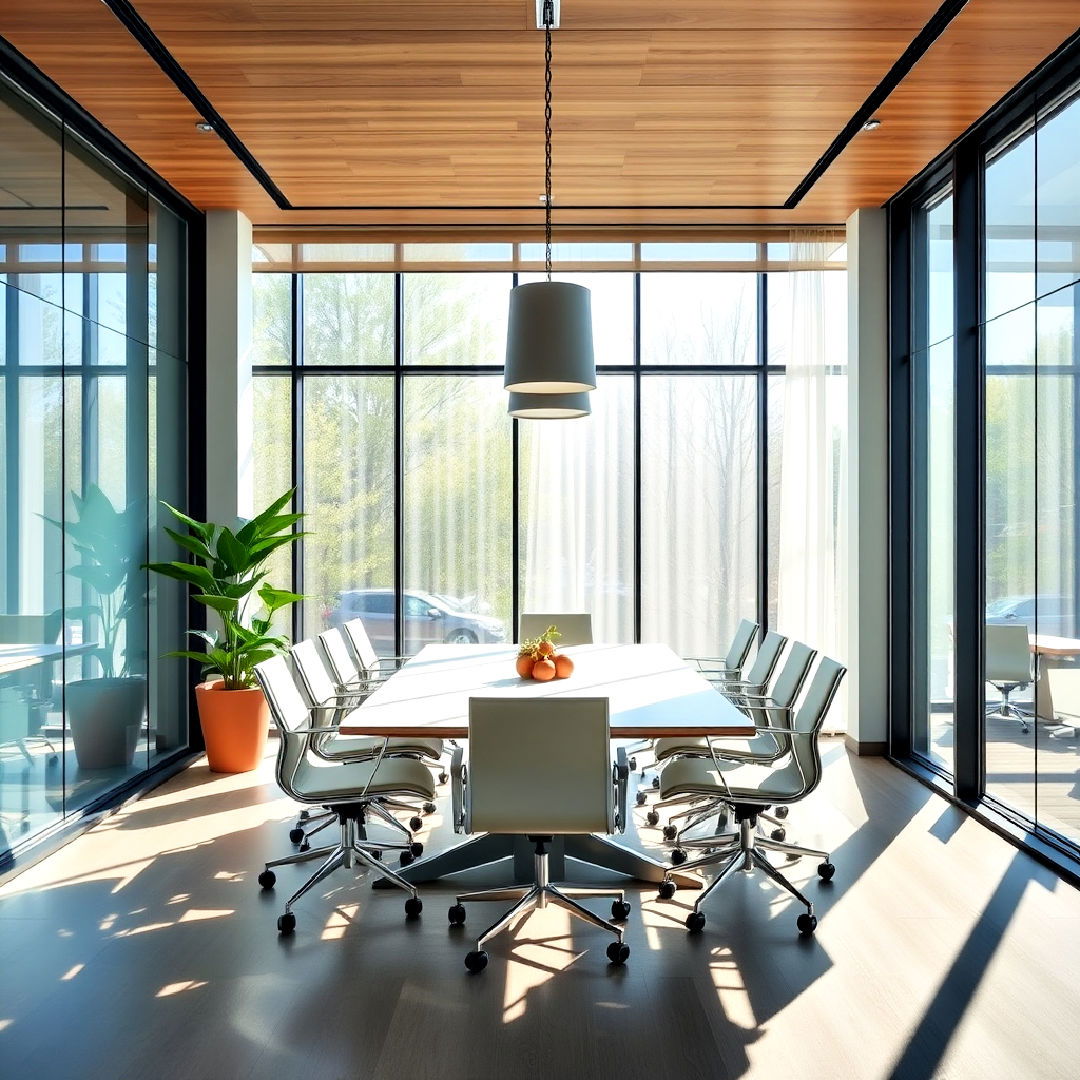
Maximizing natural light in a conference room creates a bright and energizing atmosphere, reducing the need for artificial lighting. Large windows or glass walls allow sunlight to fill the room, enhancing focus and reducing eye strain. Use sheer curtains or blinds for light control without blocking views. Natural light not only boosts productivity but also makes the space feel more open and inviting, perfect for long meetings or creative brainstorming sessions.
2. Use Flexible Seating Arrangements
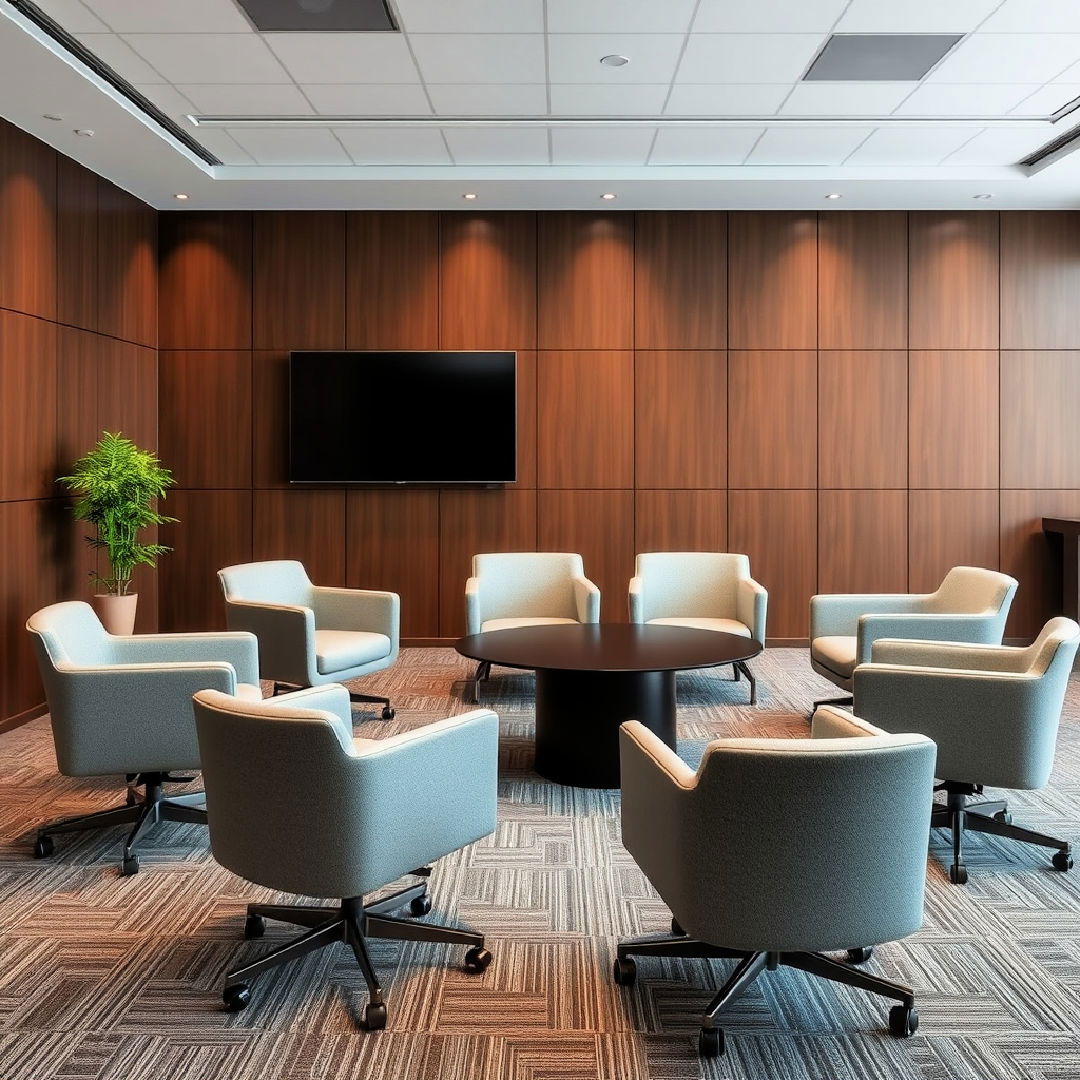
Incorporate versatile seating options that can be easily rearranged for different meeting styles. Modular furniture allows for quick adjustments between formal presentations and collaborative discussions. Comfortable chairs on wheels make it simple to shift seating for breakout groups or team activities. This flexibility ensures the room can adapt to various meeting needs while maintaining a professional, cohesive look.
3. Incorporate Technology-Friendly Features
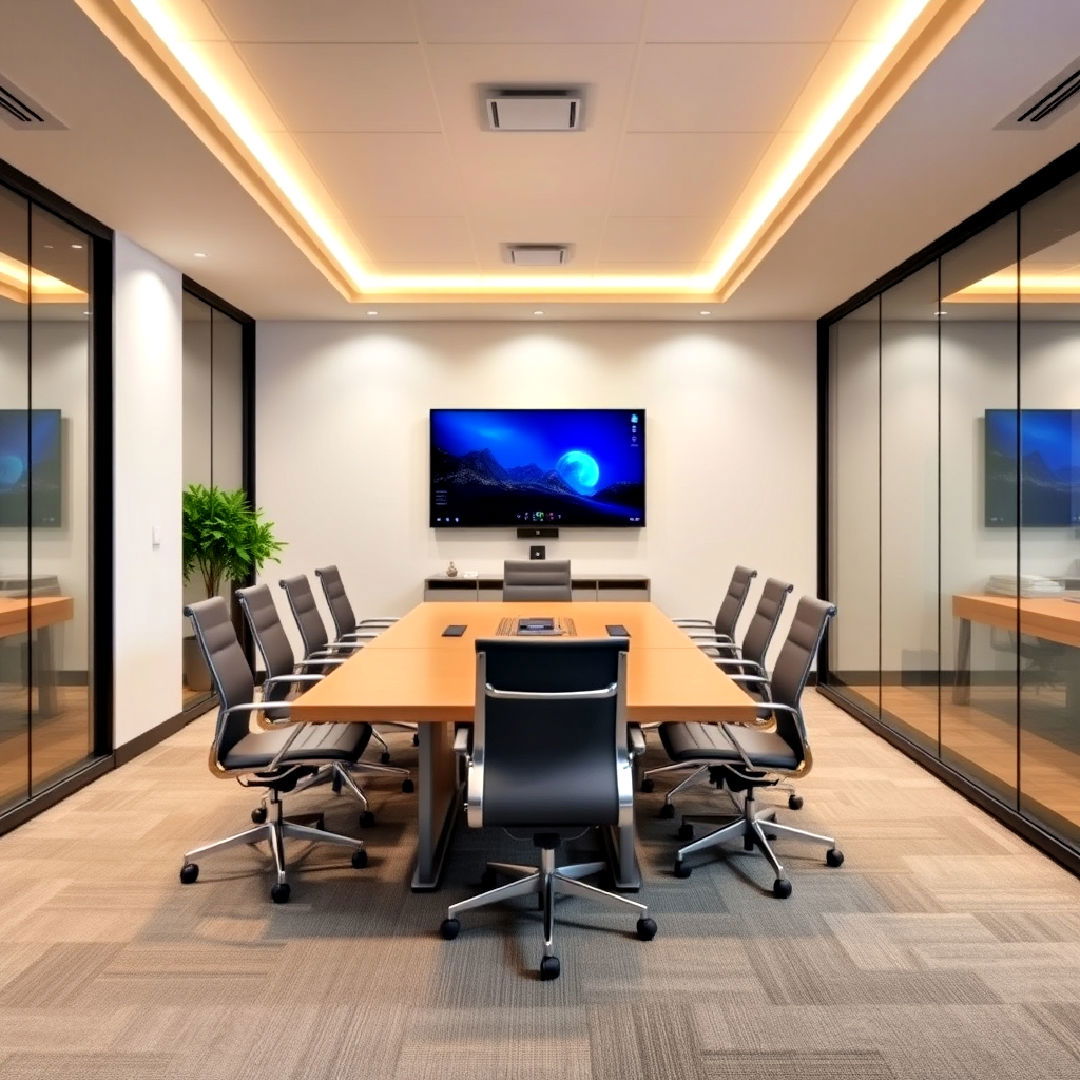
Discover creative conference room design ideas to inspire productive and stylish meeting spaces for any office. Designing a conference room with built-in technology features simplifies meetings and presentations. Install wall-mounted screens, video conferencing setups, and cable management systems for a clutter-free environment. Wireless charging stations and smartboard integration further enhance functionality. These additions streamline operations, ensuring a seamless meeting experience for both in-person attendees and remote participants.
4. Add Acoustic Panels for Sound Control
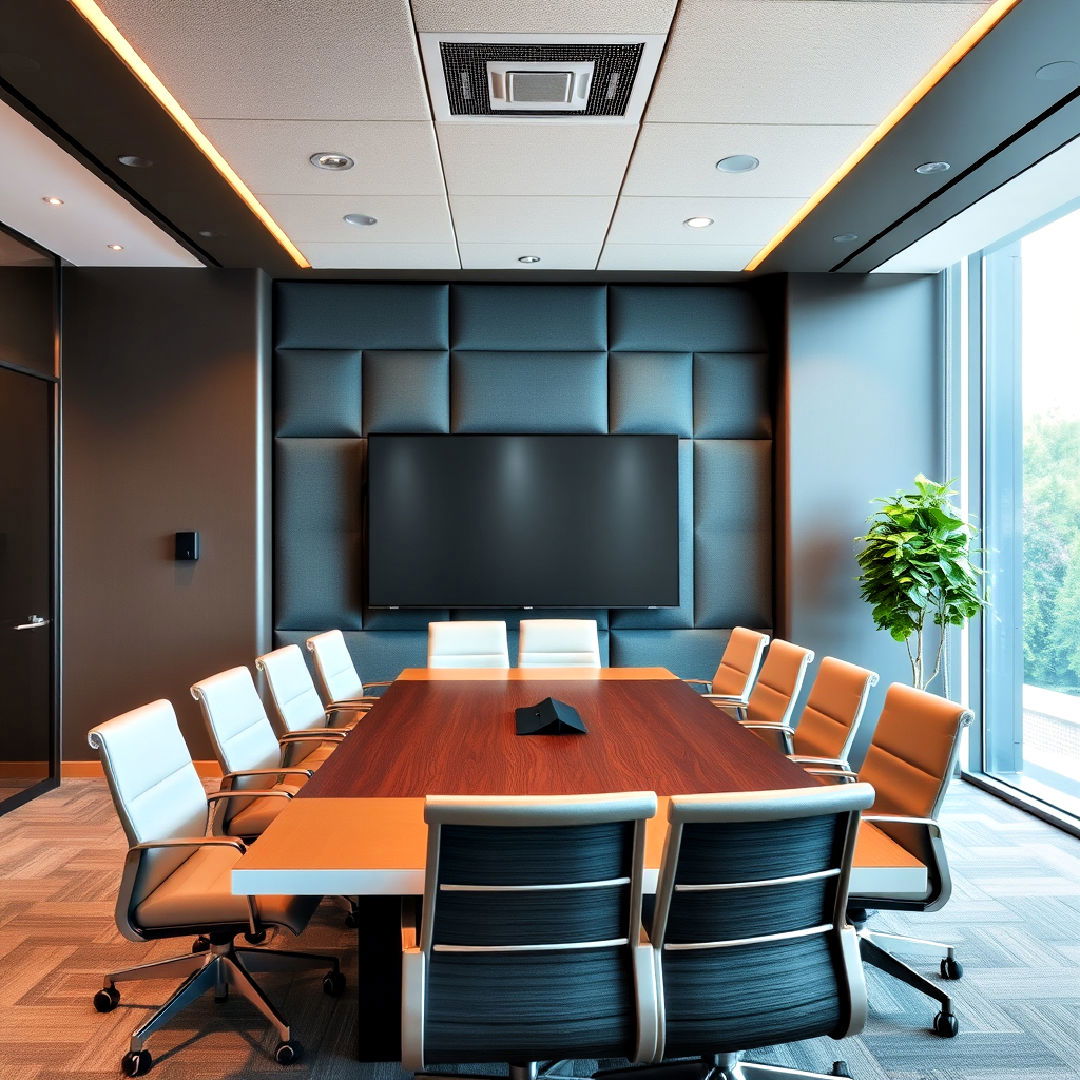
Acoustic panels are a great addition to conference rooms, improving sound quality and minimizing external noise distractions. Install these panels on walls or ceilings to absorb echoes and prevent sound from traveling out of the room. They are available in a variety of colors and styles, allowing you to choose an option that complements the room’s décor while enhancing its overall acoustics.
5. Incorporate a Statement Piece
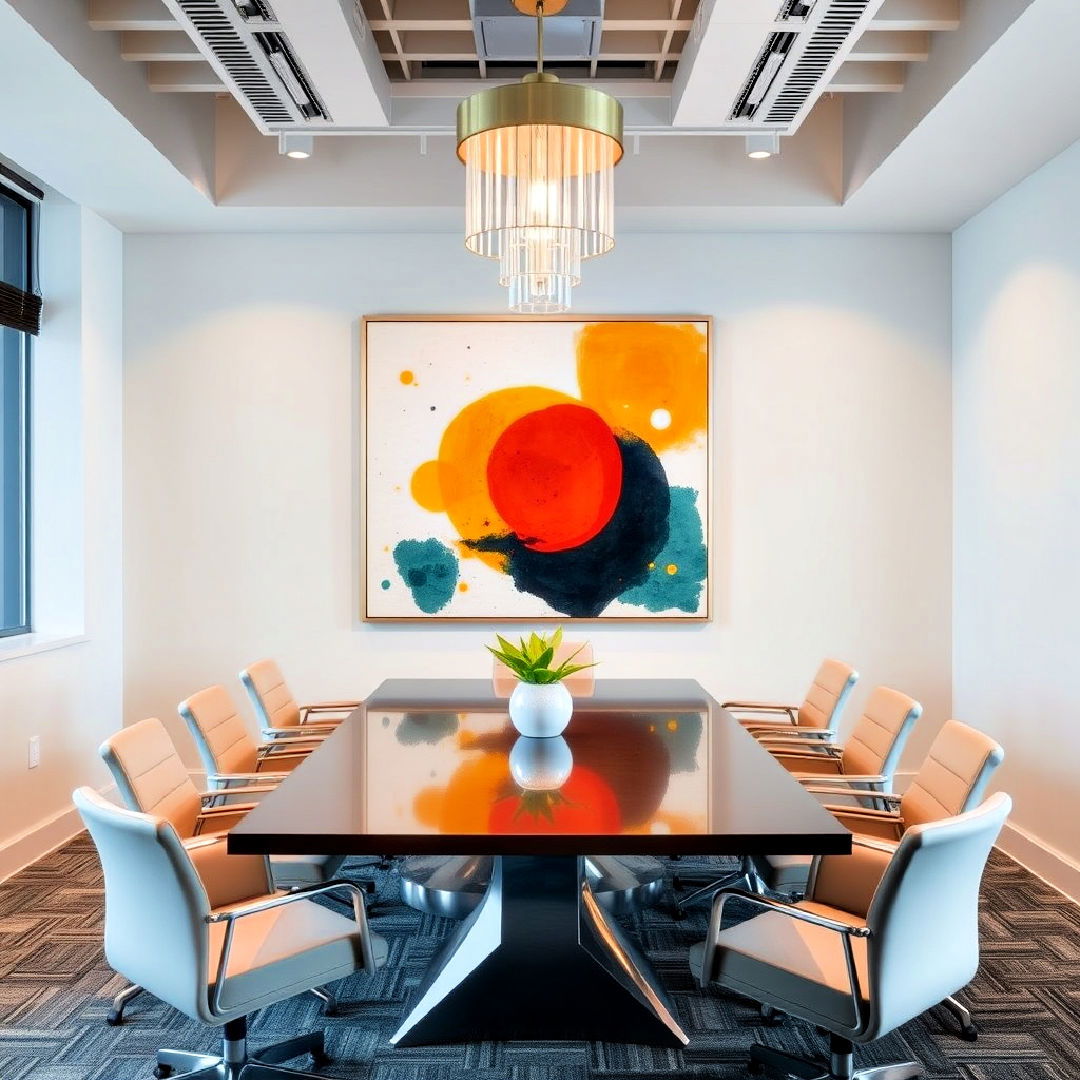
A well-chosen statement piece, such as an oversized artwork, unique light fixture, or custom table, can transform the look of a conference room. This feature adds personality and visual interest without overwhelming the space. Opt for something that reflects your brand’s culture or values, helping to create a lasting impression on clients and visitors while adding an element of creativity to your workspace.
6. Create a Biophilic Design
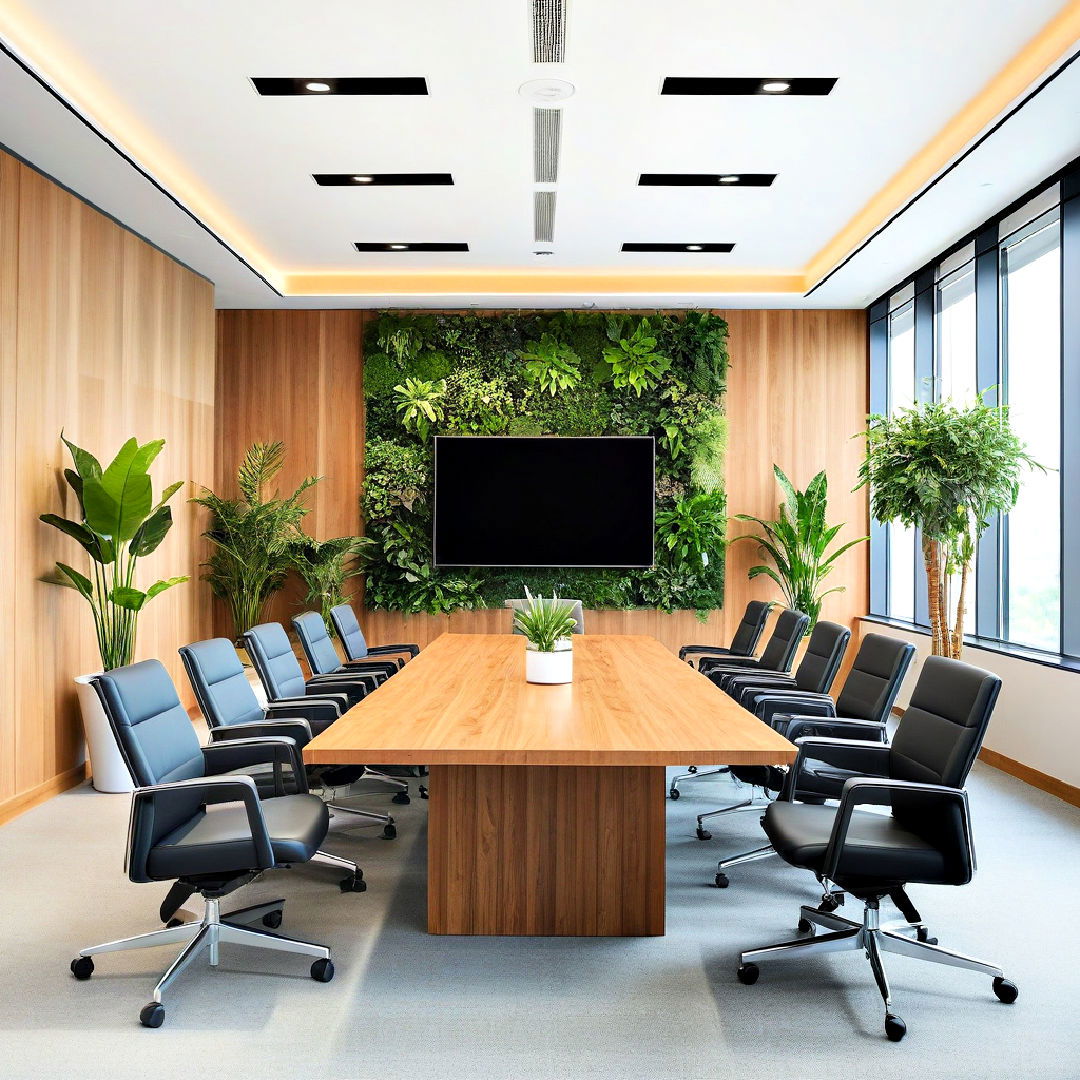
Incorporating plants and natural elements into the conference room creates a calming, refreshing atmosphere. Greenery can improve air quality, reduce stress, and enhance concentration during long meetings. Consider adding potted plants, a green wall, or natural wood finishes to bring the outdoors inside. This biophilic approach fosters a healthier and more inspiring environment, encouraging creativity and productivity.
7. Use Color Psychology
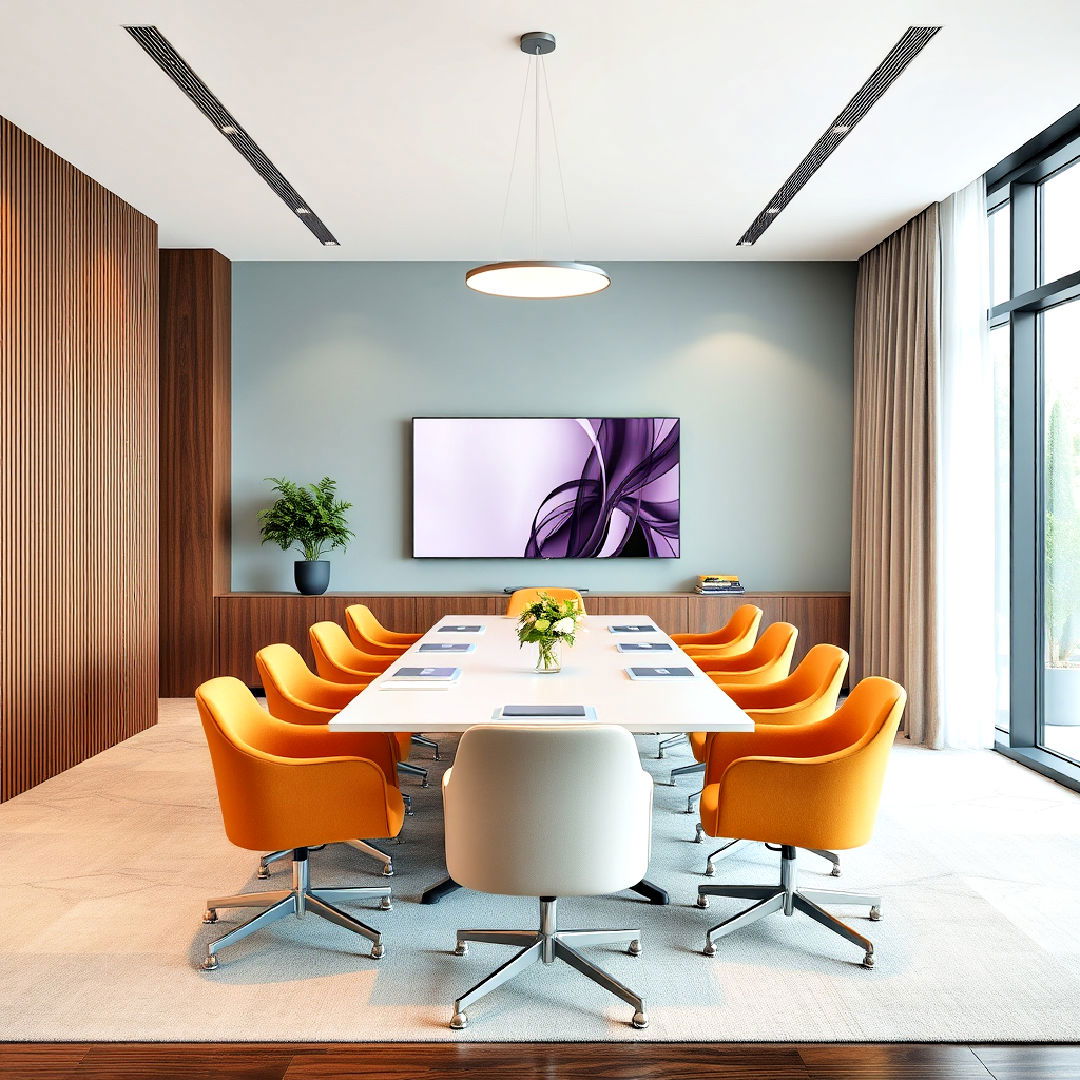
The right color scheme can significantly influence the mood and energy in a conference room. Soft blues and greens promote calmness and focus, while warmer shades like yellow or orange can inspire creativity and enthusiasm. Neutrals such as gray or beige provide a professional tone. Choose colors that align with the purpose of the space and the brand’s identity to create a room that feels both functional and aesthetically pleasing.
8. Incorporate Glass Partition Walls
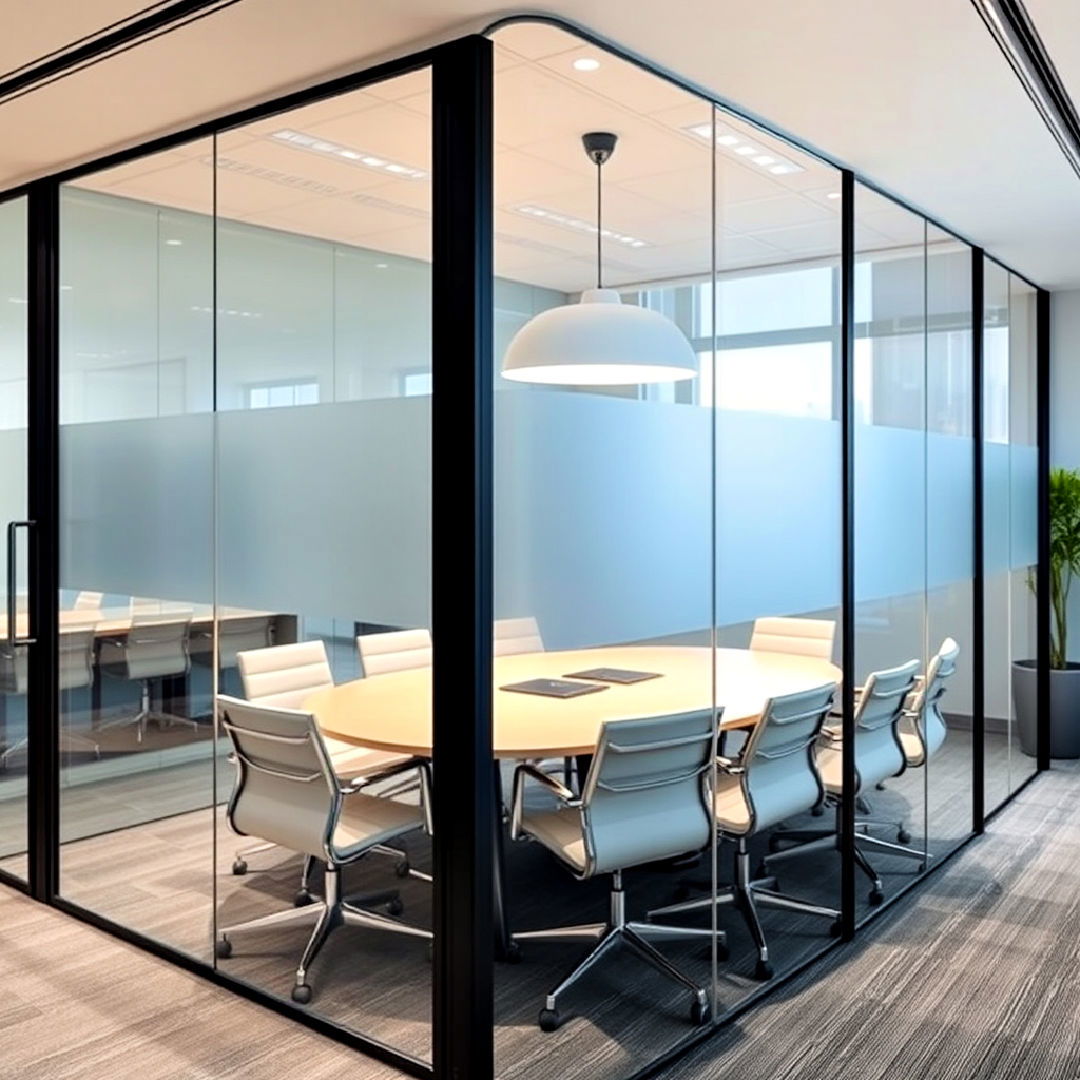
Explore sleek and functional modern conference room design solutions that blend aesthetics with practicality. Glass partition walls give a modern and sleek look to conference rooms, while maintaining privacy with frosted or tinted finishes. They create a sense of openness, making smaller rooms feel larger and more connected to the rest of the office. Glass walls also allow natural light to flow through, promoting a collaborative yet professional atmosphere. Their transparent nature keeps the room visually appealing without feeling confined.
9. Add a Whiteboard or Writable Walls
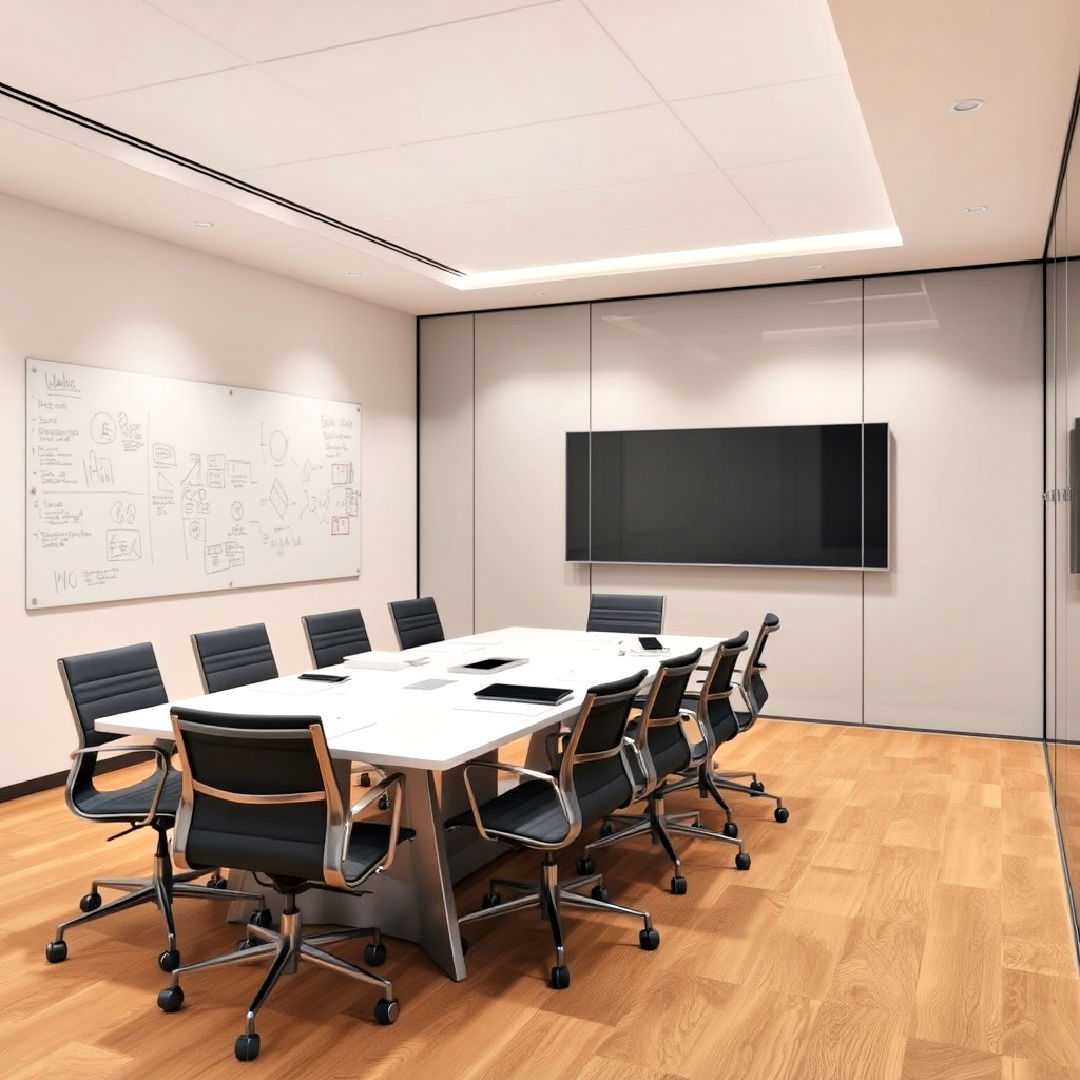
Writable surfaces, such as whiteboards or glass walls, encourage collaboration and idea-sharing during meetings. Install large, easily accessible boards where teams can jot down ideas, sketch diagrams, or outline plans. Writable walls offer flexibility, making it easy to visualize concepts in real time and foster a hands-on approach to problem-solving. This interactive element enhances creativity and keeps discussions focused.
10. Use Ergonomic Furniture
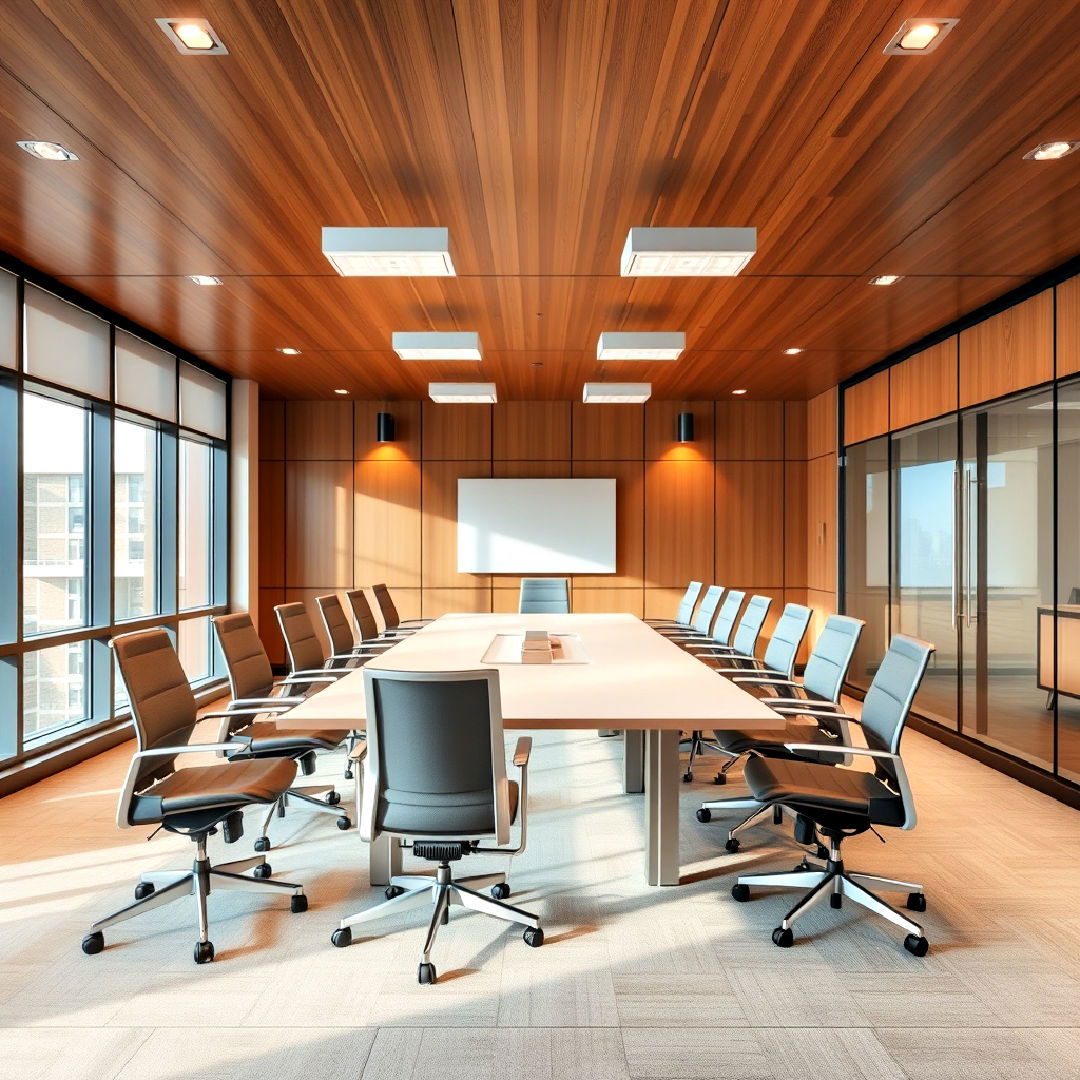
Investing in ergonomic chairs and tables ensures comfort during long meetings, which can improve focus and reduce fatigue. Adjustable seating, lumbar support, and desks at optimal heights promote good posture and well-being. Ergonomic furniture not only enhances comfort but also reflects a commitment to the health and productivity of employees and visitors alike, contributing to an overall positive meeting experience.
11. Incorporate Smart Lighting
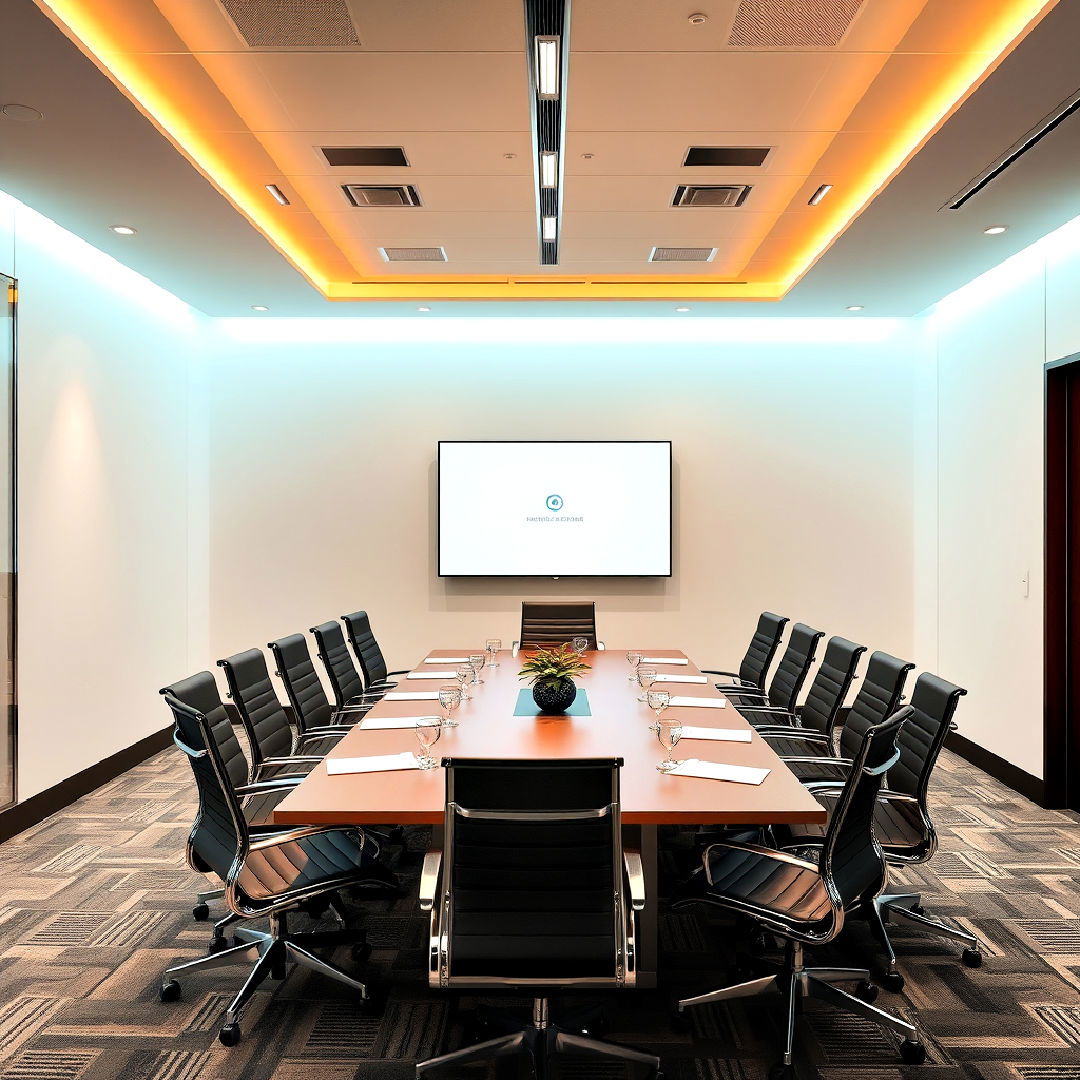
Smart lighting systems allow you to adjust the brightness and color of the room based on the meeting type or time of day. For presentations, dim the lights for better screen visibility, while brighter settings can enhance focus during brainstorming sessions. Motion sensors or voice-activated controls can add convenience, making it easy to set the ideal lighting environment with minimal effort.
12. Utilize Dual-Purpose Furniture
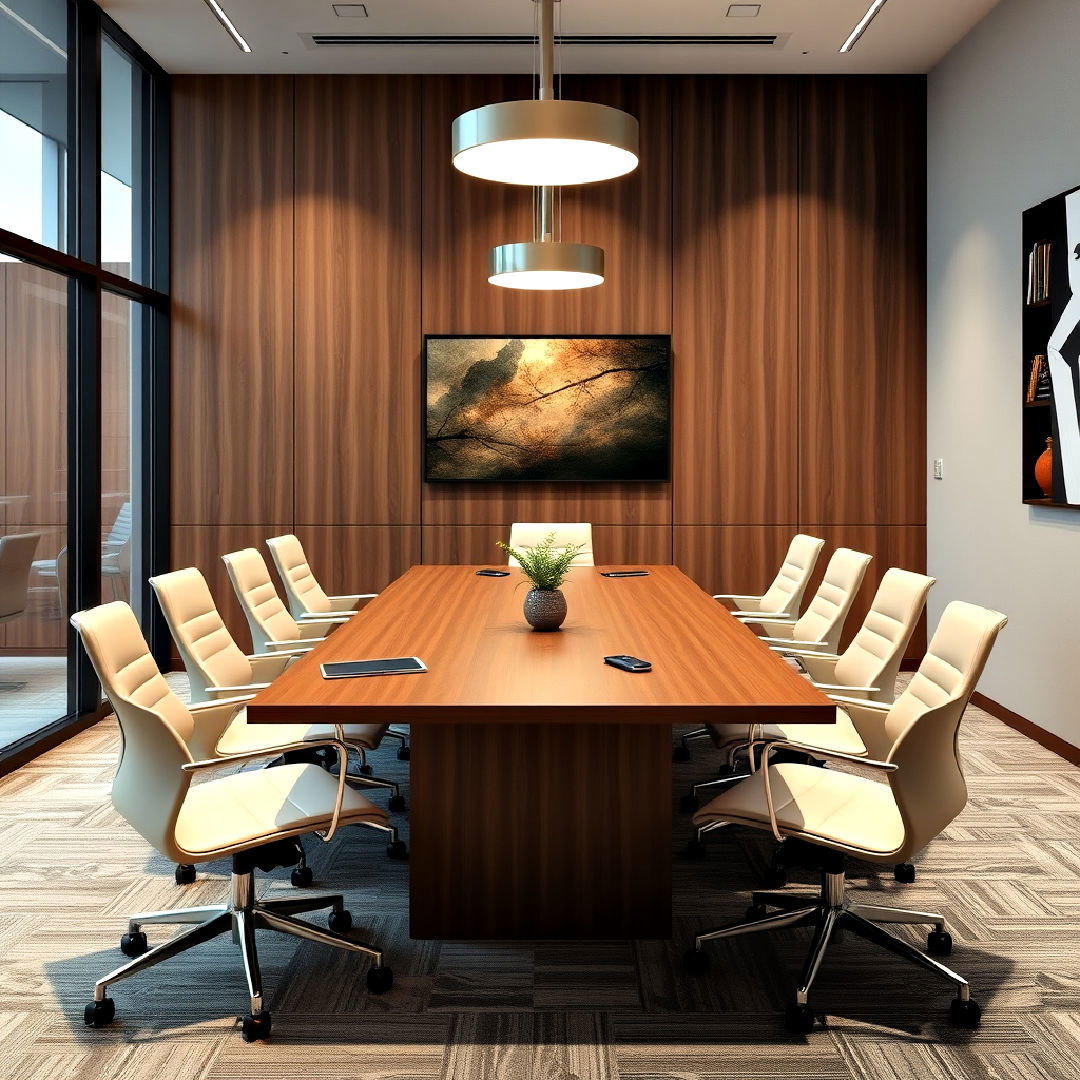
Furniture that serves multiple functions maximizes the use of space in a conference room. Consider tables with built-in storage or seating that doubles as extra storage space for tech equipment and supplies. Dual-purpose furniture allows you to maintain a clean, organized room, ensuring that everything needed for meetings is readily accessible without cluttering the space.
13. Create a Lounge Area
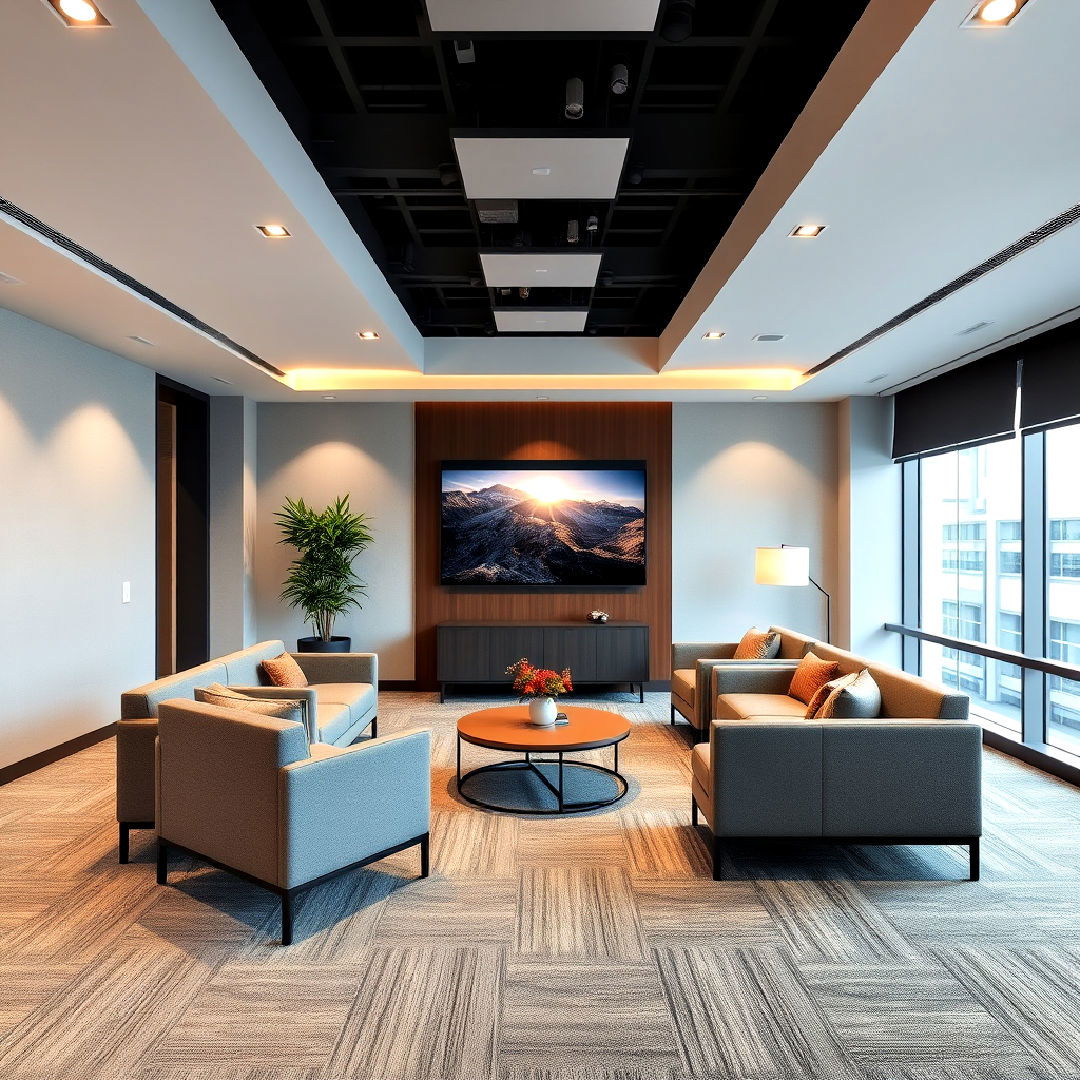
Create a professional and efficient office conference room that enhances collaboration and productivity. Adding a small lounge area to a conference room offers a comfortable, informal space for more relaxed discussions or breaks. A cozy seating arrangement with couches or armchairs can encourage creative thinking and allow for more casual conversations. This setup promotes a less rigid atmosphere, ideal for brainstorming sessions or impromptu meetings.
14. Incorporate Branding Elements
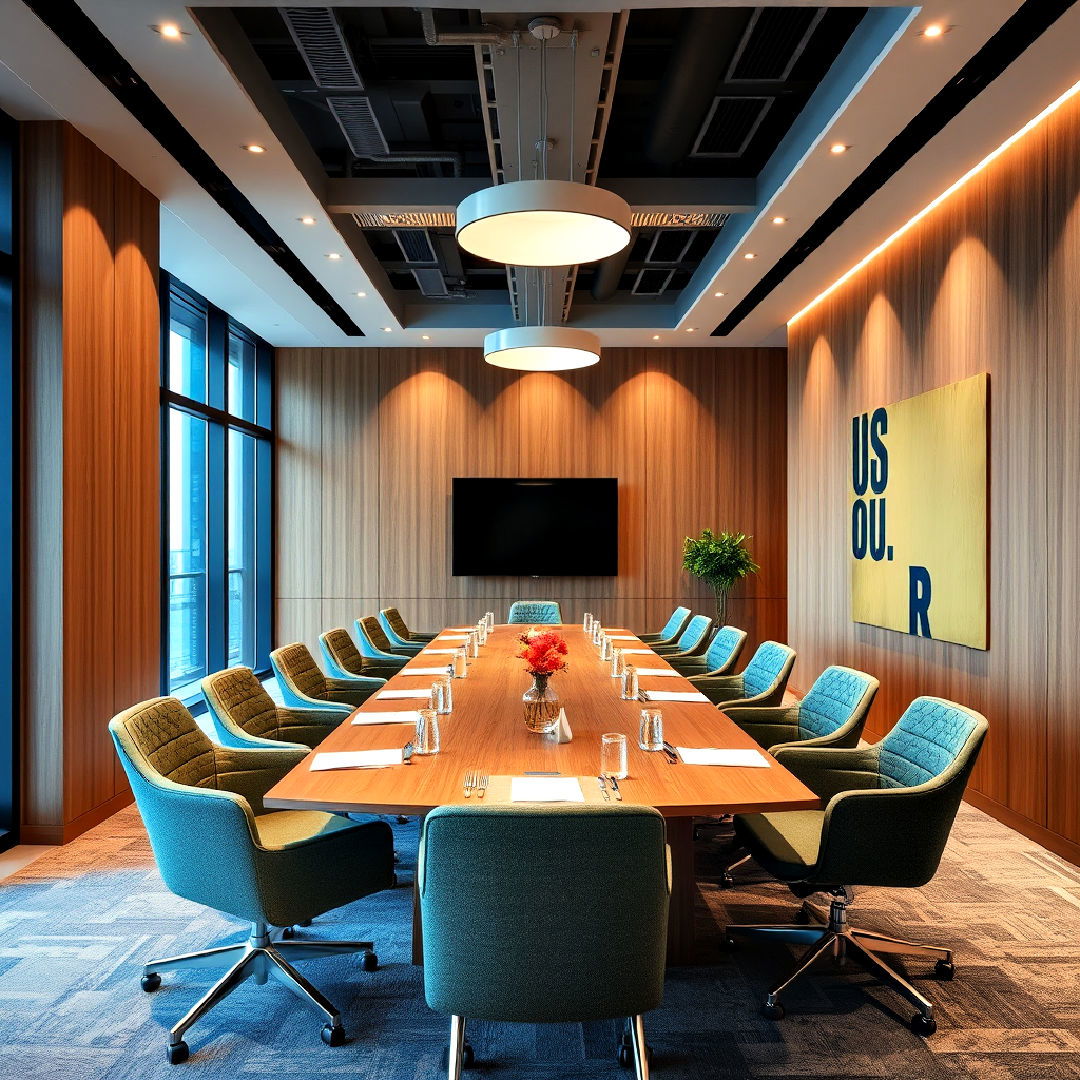
Subtly integrating your company’s branding into the conference room design reinforces identity and culture. Add logos, brand colors, or mission statements in the décor or furniture. Custom artwork, signage, or even branded tableware can make the space feel unique to your organization. This creates a cohesive environment that reflects your company’s values and vision, leaving a lasting impression on clients and guests.
15. Install Adjustable Room Dividers
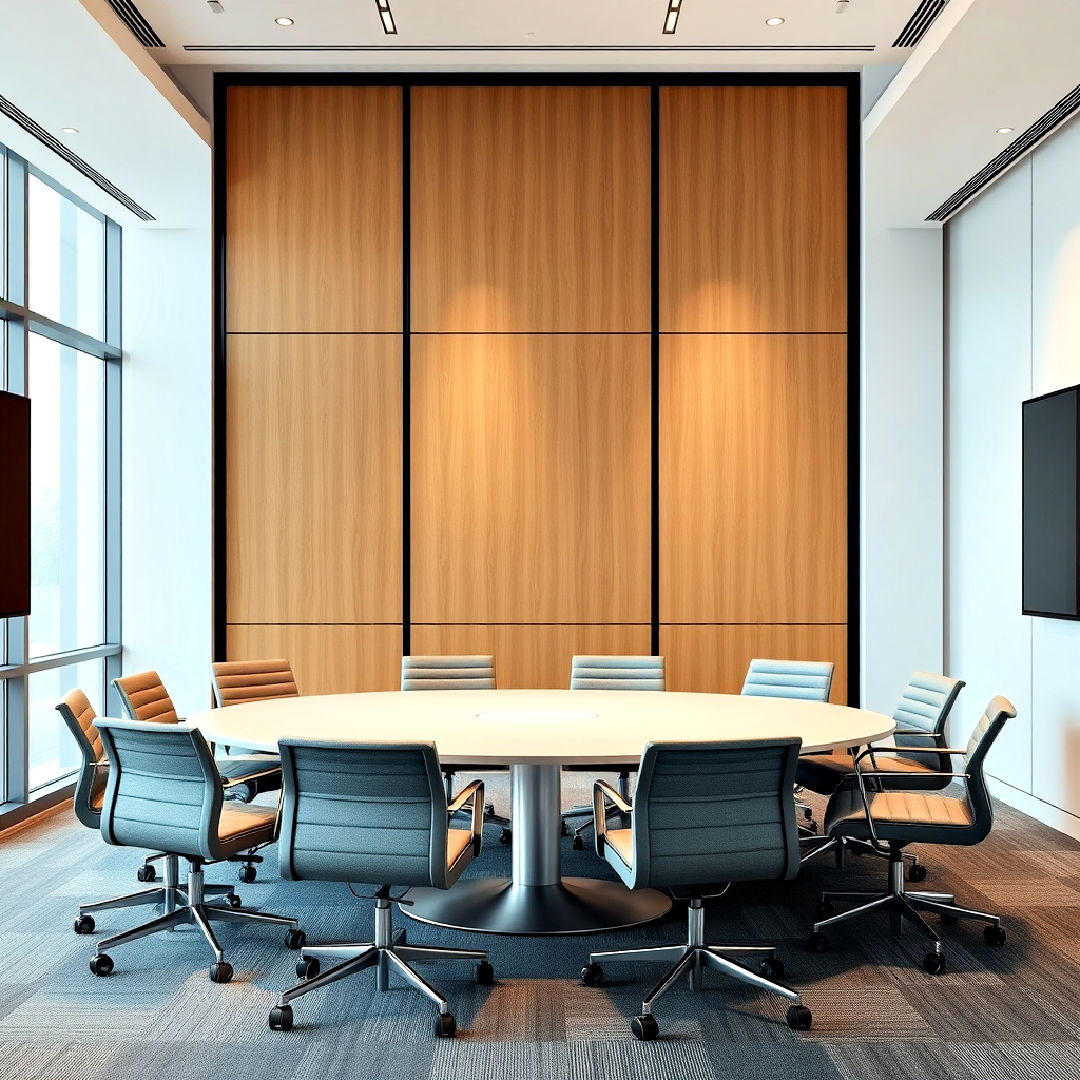
Room dividers that can be moved or adjusted allow you to create flexible spaces within the conference room. These partitions provide privacy for smaller meetings or can be opened up to accommodate larger groups. Adjustable dividers give you control over the layout, making the room adaptable for different meeting sizes and formats without the need for permanent walls.
16. Use Interactive Digital Displays
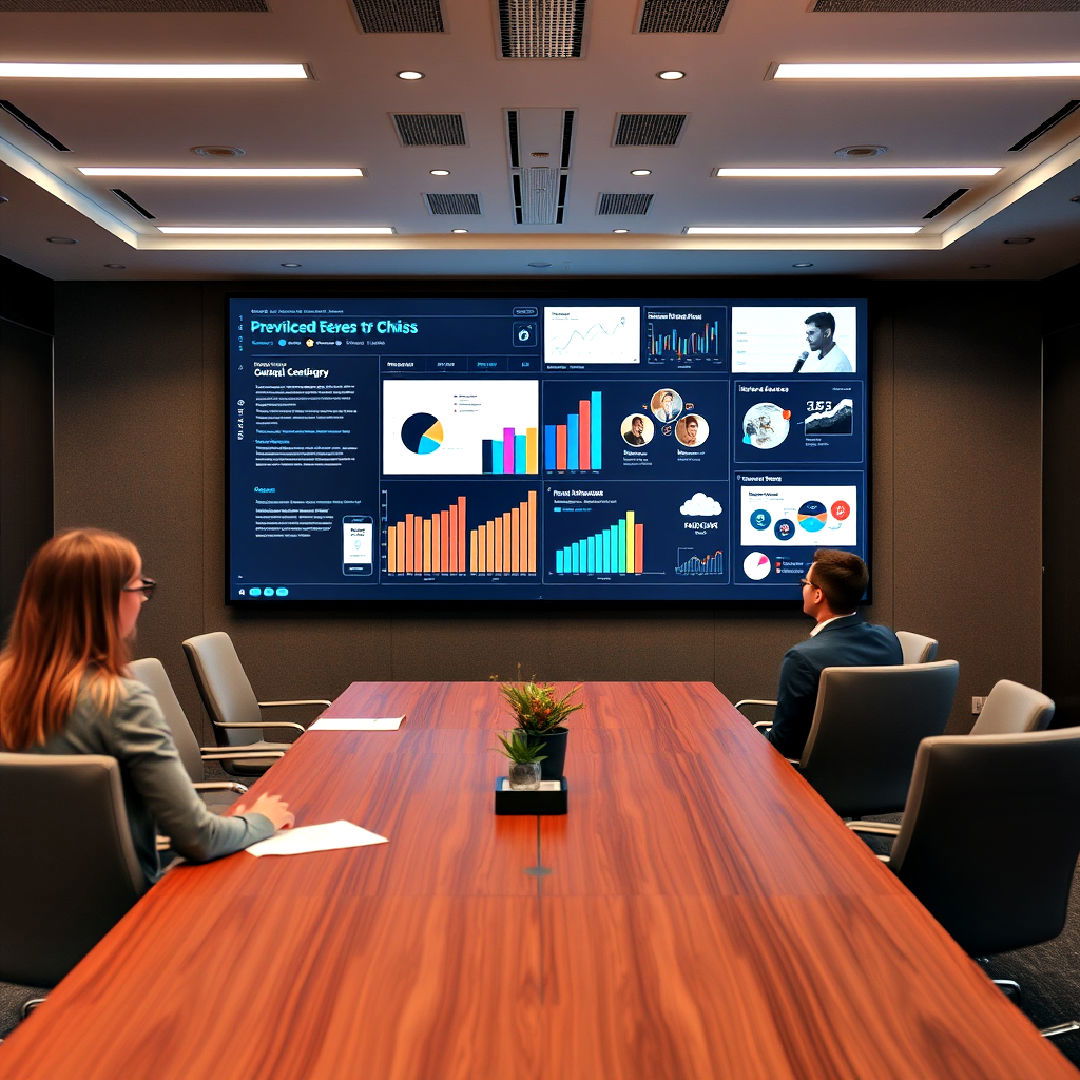
Interactive touchscreens or digital displays take meetings to the next level by enabling real-time collaboration and presentations. These displays allow participants to engage directly with the content, whether it's annotating charts, drawing diagrams, or controlling slides. Interactive technology enhances engagement and makes meetings more dynamic, helping teams stay focused and involved.
17. Create a Minimalist Design
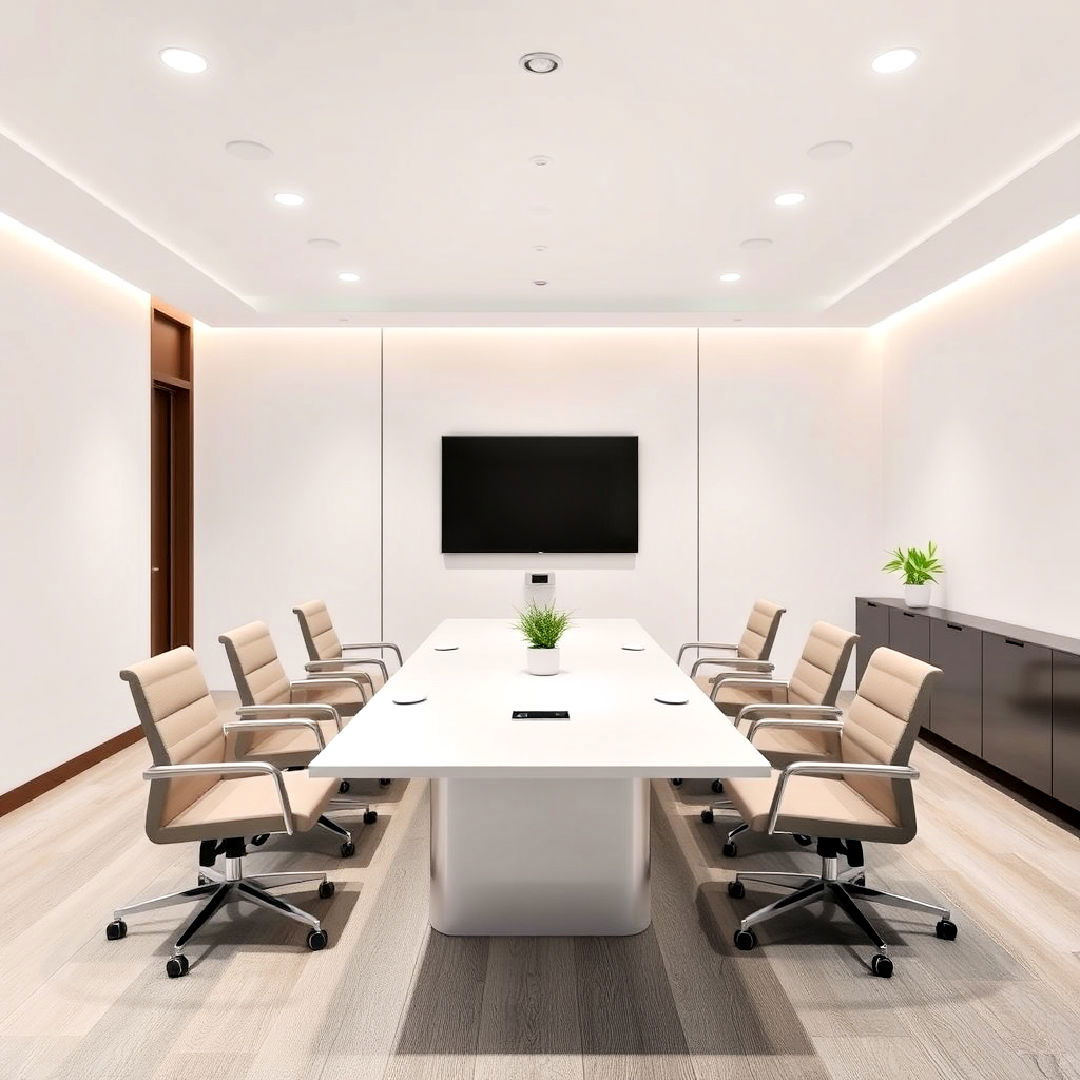
A minimalist approach focuses on simplicity, using clean lines and uncluttered surfaces to create a calm, organized space. Fewer distractions promote concentration and productivity. Choose sleek furniture, neutral colors, and hidden storage solutions to maintain a professional, no-nonsense atmosphere. A minimalist design emphasizes function over decoration, perfect for businesses that value efficiency and focus.
18. Add an Art Wall
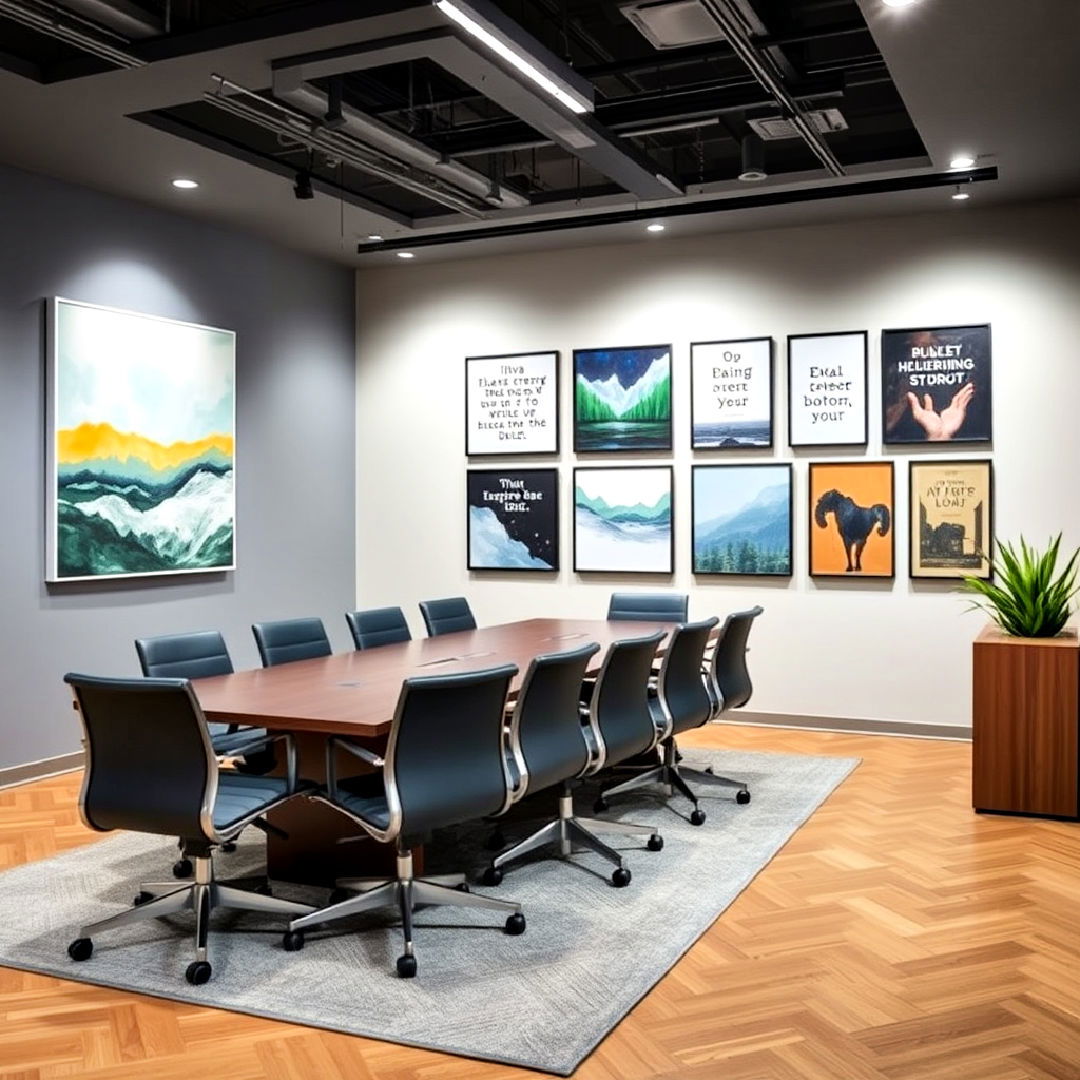
Incorporating art into your conference room brings personality and inspiration into the space. Whether it's local artwork, abstract paintings, or motivational prints, an art wall adds a splash of creativity and interest to an otherwise plain room. Choose pieces that align with your company’s brand or culture to subtly enhance the space’s character while fostering a stimulating environment for discussions.
19. Ensure Proper Ventilation
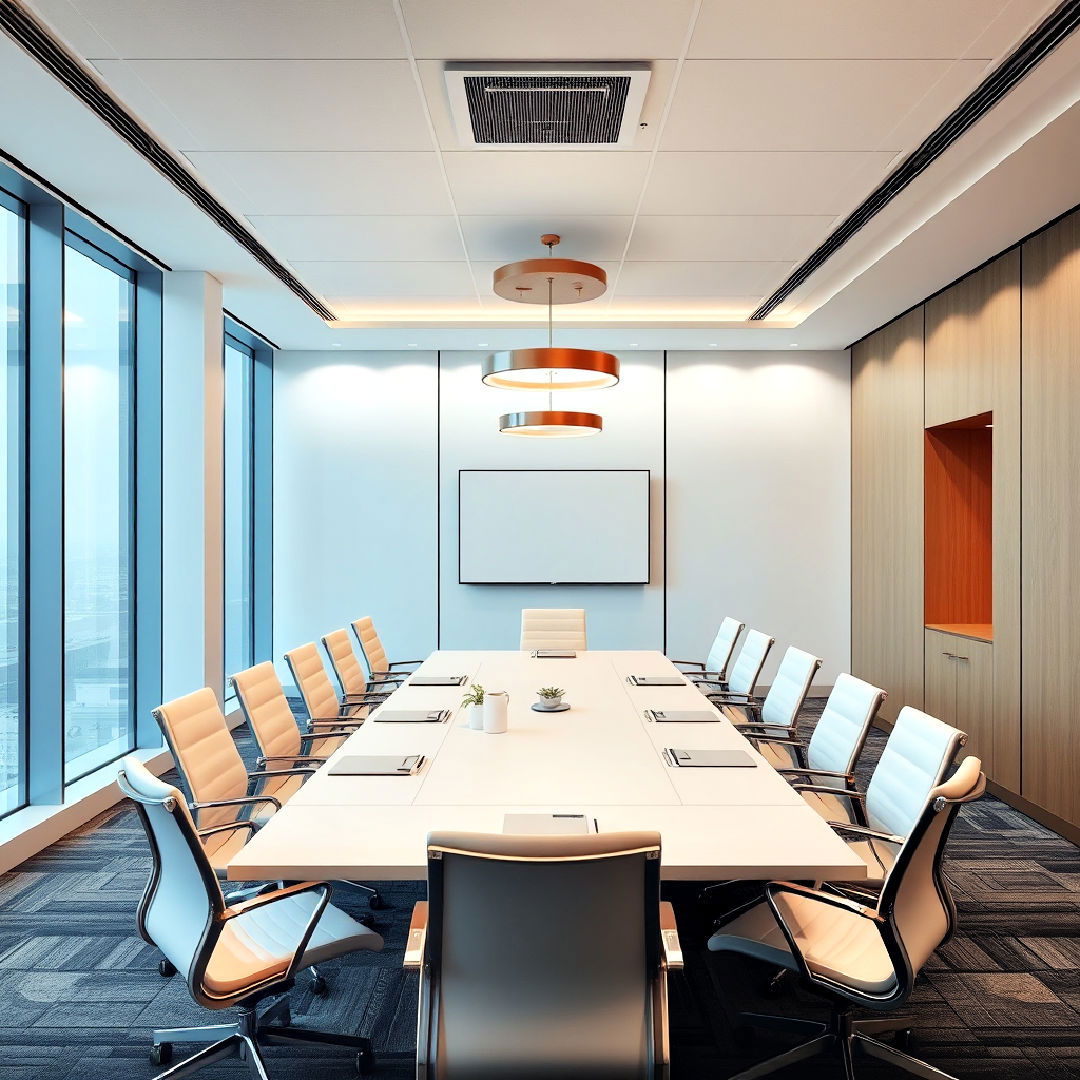
Transform your meeting space with innovative conference room interior design concepts tailored to your needs. Good air circulation is essential for a comfortable and productive meeting environment. Ensure that your conference room has adequate ventilation or consider installing air purifiers. This helps reduce stuffiness, especially in longer meetings, and maintains a fresh atmosphere. Proper ventilation contributes to better focus and can prevent the room from feeling closed off or uncomfortable.
20. Use Soundproofing Solutions
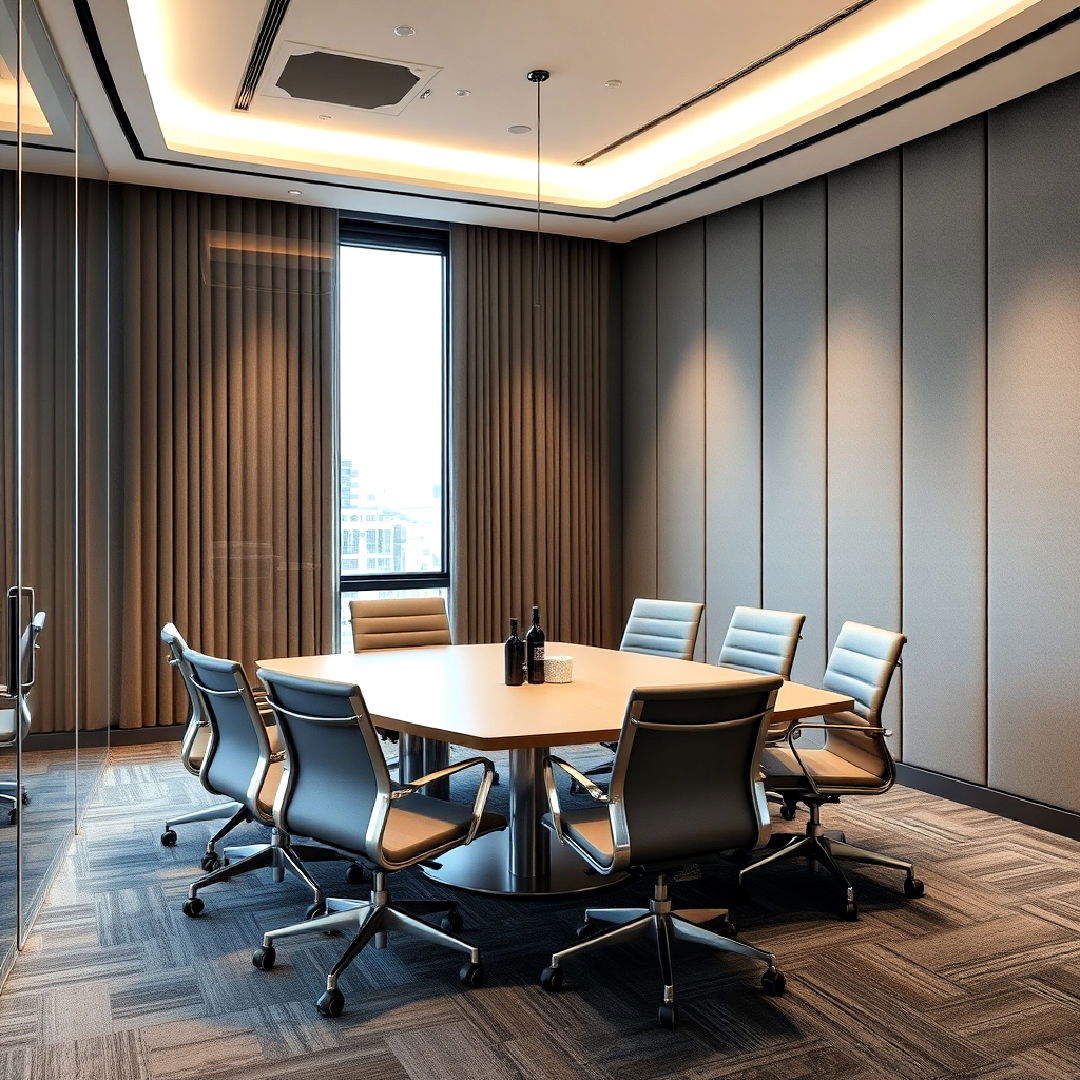
To maintain privacy and reduce distractions, soundproofing is essential in conference room design. Soundproof glass, thick carpets, or padded walls help to absorb noise and prevent confidential discussions from leaking into other parts of the office. This solution not only ensures clear communication during meetings but also keeps outside noise from interfering with focus. Soundproofing adds professionalism and comfort to any conference room.
Conclusion:
From harnessing natural light to integrating smart technology and soundproofing solutions, designing a professional conference room is about balancing aesthetics with functionality. A well-thought-out space not only boosts productivity but also enhances the experience of collaboration and creativity. By tailoring these ideas to your specific needs, you’ll create a room that embodies your organization’s identity while meeting modern workplace demands.
Key Points:
- Natural Light and Biophilic Elements: Incorporating natural light and greenery enhances the room’s atmosphere, promoting focus and reducing stress.
- Flexible and Functional Layouts: Use adjustable seating, dual-purpose furniture, and movable dividers to adapt the room for various meeting needs.
- Technology Integration: Add smart lighting, interactive displays, and writable walls to encourage collaboration and streamline communication.
- Acoustic and Soundproofing Solutions: Install panels and soundproofing to minimize distractions and maintain privacy.
- Aesthetic Enhancements: Use ergonomic furniture, color psychology, branding elements, and art walls to reflect professionalism and creativity.
What to Do Next:
- Evaluate your current conference room to identify areas for improvement in lighting, functionality, and style.
- Prioritize upgrades based on your team’s needs, such as better technology integration or improved seating arrangements.
- Research suppliers for ergonomic furniture, acoustic panels, and smart devices to align with your design goals.
- Create a budget and timeline for implementing these changes, ensuring minimal disruption to office operations.
- Consider consulting a professional interior designer for customized solutions tailored to your organization’s brand and vision.

